


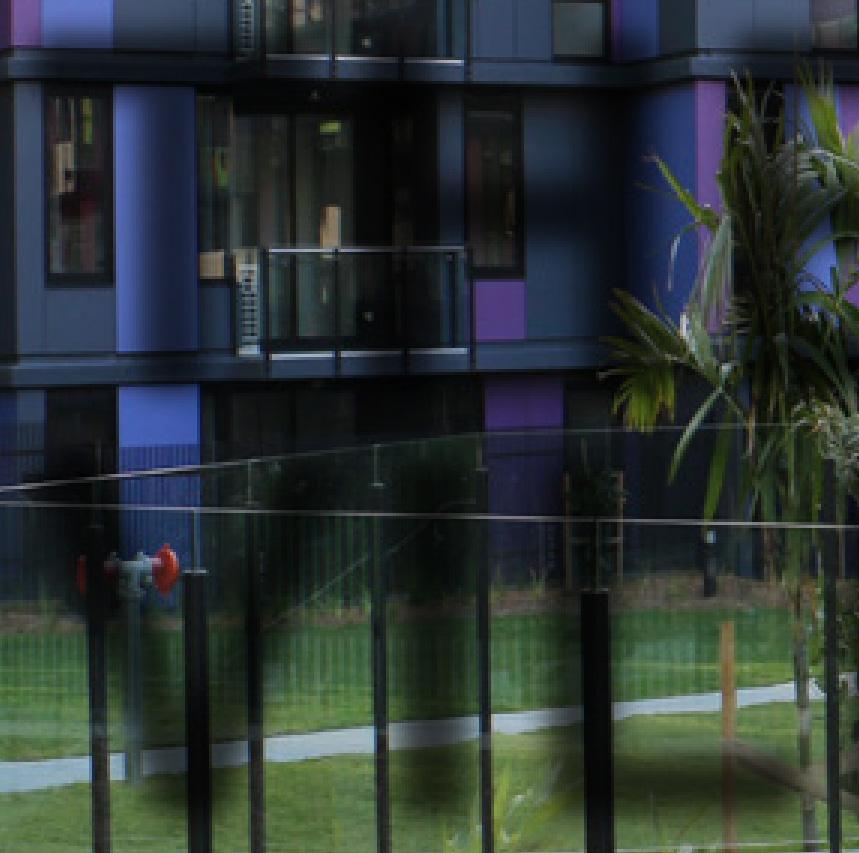








APRIL 2018 1 SYDNEY • MELBOURNE • ADELAIDE • BRISBANE • PERTH • CANBERRA FREE APRIL 2018 • info@indianlink.com.au • www.indianlink.com.au MELBOURNE THE VILLAGE TAKE A PEEK INSIDE APRIL 2018 9 WINNER OF 21 MULTICULTURAL MEDIA AW Level 24/44 Market St, Sydney 2000 • GPO Box 108, Sydney 2001 • Ph: 18000 15 8 47 • email: info@indianlink.com.au
2 APRIL 2018 www.indianlink.com.au
PUBLISHER
Rajni
Preeti Jabbal
CONTRIBUTORS
PAWAN LUTHRA
The recent news that India is the fastest growing tourism market in NSW is an endorsement of a side benefit - an additional value if you will - of immigration.
The Big Australia debate finds itself in the national discourse on a regular basis, and there are the strong detractors (former NSW Premier Bob Carr, former Australian Prime Minister Tony Abbott, Pauline Hanson etc.) as well as fervent supporters.
As a migrant myself, having experienced and contributed to the growth of this country, I am an ardent supporter of an Australia that has the ability to accommodate a larger number of people who want to call it home.
Australia is one of the most stable economies in the world and a respected member of the international community. As one of the most liveable countries

in the world, it is a valued migration destination, and has a smooth inflow of highly skilled migration. As such, it finds itself very attractive to educated, aspirational Indians, India’s biggest export.
When they move to Australia, these migrants bring with them professional skills - and often entrepreneurship and even capital - adding to economic growth downline.
They also bring with them a great source of potential visitors from a large pool of friends and family back home.
And herein lies the economic benefit to Australia. This pool of friends and family adds to the tourism inflows, such that for the year 2017, India, while still behind China and US in the number of tourists, still clocked in 147,000 visitors to Australia, spending in NSW alone over $337 million. That is $2,300 per tourist; in rupee terms, this spend is well within the reach of the aspirational middle class.
In India, where the middle class can stretch to over 400 million, Australia has not even scratched the surface. The United States welcomes over 1.14 million Indian tourists per year, UK over
800,000. You’ve got miles to catch up, Australia!
What Tourism Australia needs to do is to understand the changing and growing dynamics of these trends. While Sydney is blessed with its beautiful harbour and the Blue Mountains and koala-cuddle opportunities, these may be selling themselves already to Indian visitors. It is time to look beyond. Speak to teenagers from India about to visit Australia, and you’ll be pleasantly surprised what they want to do here: visit the MasterChef studios; queue up for a meal at Kylie Kwong; take a surfing lesson. These are but some of the ‘iconic’ Australian experiences for today’s 14-18 year old Indians who are joining their parents on a visit to Australia and who, in most cases, are in charge of the itinerary.
Remember also the 200,000-odd Indian-origin Australians in NSW who have shared some mouth-watering images of their new home to their large social circles ‘back home’ of brothers, sisters, nieces, nephews, cousins and second cousins.
These are your brand ambassadors, Tourism Australia.
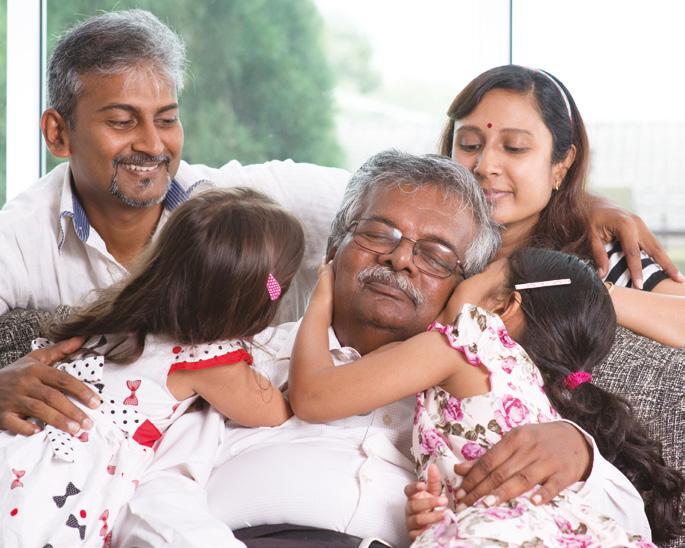
Thak Gaya…?
APRIL 2018 3
Pawan Luthra EDITOR
Anand Luthra
ASSISTANT EDITOR
Harshad Pandharipande
MELBOURNE COORDINATOR
Aparna Ananthuni, Liz Gaete, Emie Roy, Jyoti Shankar, Minnal Khona ADVERTISING Victorian Sales Manager Varun Pal 0490 705 729 National Sales Vivek Trivedi 0410 578 146 Advertising Assistant Charuta Joshi 02 9279 2004 Indian Link is a fortnightly newspaper published in English. No material, including advertisements designed by Indian Link, may be reproduced in part or in whole without the written consent of the editor. Opinions carried in Indian Link are those of the writers and not necessarily endorsed by Indian Link. All correspondence should be addressed to: INDIAN LINK MEDIA GROUP Level 24/44 Market St, Sydney 2000 GPO Box 108, Sydney 2001 Ph: 02 9279-2004 Fax: 02 9279-2005 Email: info@indianlink.com.au
EDITORIAL
Harshita Srinivas, Ritam Mitra, Neha Malude, Virat Nehru, Auntyji Raka Sarkhel Laha, Nikita Kulkarni,
BY
Doing our bit for Oz tourism
Your tiredness might be something more. Hepatitis C affects thousands of people living in Australia and is even more common overseas. It may be transmitted if you’ve had a blood transfusion, a dental or medical procedure here or back at home.
Lo… Hepatitis C can be cured with a simple new treatment. See your doctor about getting tested for Hep C. GET TESTED, GET CURED, LIVE YOUR LIFE Call 1800 437 222 Or 131 450 for language assistance Or log on to testcurelive.com.au
Test Kar
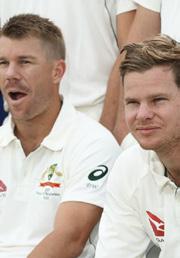


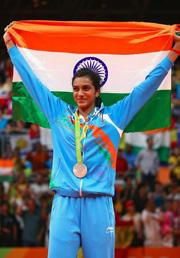

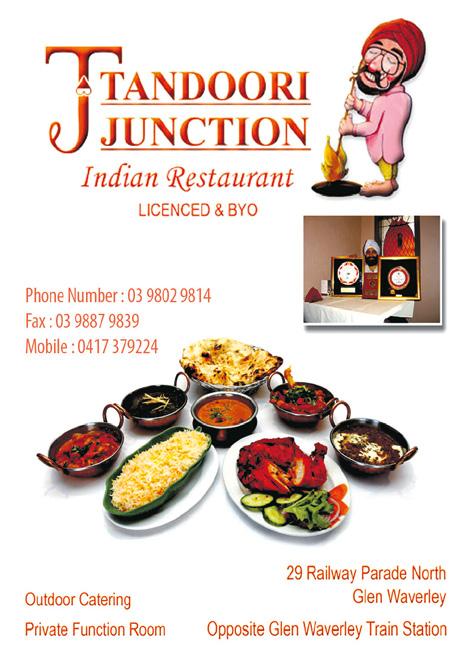


4 APRIL 2018 www.indianlink.com.au Gold Coast 2018: A peek inside the Games Village 8 20 12 10 COVER STORY SPECIAL FEATURES 10 CWG 2018 Team India: Who we’ll be watching 12 SPECIAL FEATURE #BallTampering: Cricket in crisis 16 STAGE Anoushka Shankar in concert 20 FESTIVAL Indian Festival Melbourne Society 22 TOURISM India Tourism to exit Oz CONTENTS 22
offer catering services for all occassions: • Birthdays, • Weddings, • Corporate Events • Puja / Langar
cater from 20 to 2000 guests and we
your budget, taste and requirements.
We
We
suit
Understanding Australia’s new broadband
By replacing and upgrading parts of the existing phone and internet network, nbn is bringing more Australians access to fast and reliable broadband services.*



Most homes and businesses need to switch




As most existing landline phone and internet services will be disconnected, it’s important you switch a ected services before your disconnection date.^ nbn will notify you by mail once you can switch to a new plan over the nbn™ access network. You’ll then have up to 18 months before existing services are disconnected.^

nbn is a wholesaler









This means nbn does not sell to the public. nbn supplies phone and internet providers with wholesale services they combine with their own
network services to deliver your new plan. So you’ll need to contact your preferred provider once you’re ready to switch.
Factors a ecting your experience




The nbn™ access network and your provider’s network are likely to slow down when more people are online at once (particularly during typical busy periods, like evenings). Maximum speeds will also vary based on your modem, Wi-Fi and other issues.* For more information on how your particular experience will be a ected, speak to your provider.
Important information on device compatibility
Safety-critical devices like medical alarms, fi re alarms, monitored security alarms and lift emergency phones, may not be compatible with your new plan at all times.† To help minimise a loss in your services, check with your device provider that these will work on your new plan or whether you’ll need to fi nd an alternative solution. It’s also important you register safety-critical devices with nbn by calling 1800 227 300 or visiting nbn.com.au/compatibility.
Contact a phone or internet provider



*Your experience, including the speeds actually achieved over the nbn™ broadband access network, depends on the technology over which services are delivered to your premises and some factors outside our control (like your equipment quality, software, signal quality, broadband plan and how your service provider designs its network). nbn is a provider of wholesale speeds to internet providers. nbn™ wholesale speed tiers available to your phone and internet provider vary depending on the access technology in your area. ^ Services o ered to phone and internet providers over the nbn™ broadband access network will be replacing phone and internet services provided over most of the existing landline networks, including copper and the majority of HFC networks within the fixed line footprint. Services provided over existing fibre networks (including in-building, health and education networks) and some special and business services may not be a ected. To find out if your services will be a ected, please contact your current phone or internet provider. For more information, visit nbn.com.au/ switcho or call 1800 687 626.† The rollout of the nbn™ broadband access network will involve new technologies, and some existing devices (including many medical alarms, autodiallers and emergency call buttons) may not be compatible with these at all times. You should contact your device provider to find out if your alarm or other device will work when connected to the nbn™ broadband access network and what alternative solutions are available. For more information, visit nbn.com.au/compatibility.
© 2018 nbn co ltd. ‘nbn’, ‘bring it on’, ‘Sky Muster’, ‘gen nbn’ and the Aurora device are trade marks of nbn co ltd | ABN 86 136 533 741.














APRIL 2018 5
BWMNCO0656/250X358/IL
YOUR SAY
WOMEN AND MONEY
PAWAN LUTHRA wrote why women, more than men, need to learn to handle their own nances
Neelam Rehal wrote: I completely agree with Mr Luthra’s opinion on women becoming nancially independent. And I speak from personal experience. A very close friend whose husband passed away rather unexpectedly found herself in dire straits as she had very little idea about how to manage nances. Worse, she didn’t even know about her husband’s liabilities. It was only after we friends rallied behind her that her nancial situation stabilised. Taking control of your nances may seem intimidating at rst, but with an open mind and desire to learn, anyone can do it.
WHY TO NOT BE A DOMESTIC GODDESS

DIPANJALI RAO wrote that changing gender expectations was essential to achieve parity

Krish Na wrote: Best read of the year!
Deen Parast wrote: In Indian culture, the house is to be kept clean so that good forces of health, wealth and prosperity are invited inside each day. This is why our mothers and grandmothers used to wash the front area of the door each morning and put auspicious signs by chalk powder. This is ancient wisdom.
HAPPY BIRTHDAY, BRIDGE!
On the Harbour Bridge’s 86th birthday, we asked our online readers to guess which Hindi lm had this as its shooting location. All got it right with HEYY BABYY, but some readers got creative!
MARDI GRAS 2018
Indian Link Radio anchor KASHIF HARRISON reported on parade and the Indian oat put up by LGBT support organisation Trikone Australasia Trikone Australasia wrote: Thank you for helping us make this Mardi Gras even more special, @indian_link!

Vandana D’souza wrote: Three men and a baby :D Manju Vinay asked: Tell us who is the baby.
Natasha Kaur wrote: Heyy Babyy, an awesome movie done in Sydney
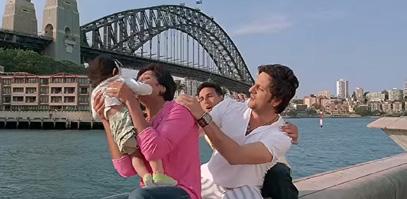
ANOTHER SYDNEY-DELHI NONSTOP FLIGHT
We shared that Air India is adding a new Saturday ight on its Sydney-New Delhi sector.

Mahesh Rohira asked: When will Melbourne Mumbai start?
Senthil Kumar wrote: Shouldn’t it y to either Kolkata or Chennai? (both being entry points).


SAY IT AGAIN
INDIA TO ABC: NO ENTRY
HARSHAD PANDHARIPANDE wrote about how an ABC Radio team was not granted Indian visa

A reader (name and address withheld on request) wrote:





Congratulations on commissioning a brave story about visa refusal to Philip Adams. Harshad has written it brilliantly and nailed them. My admiration.
Proud to stand alongside you as a champion for global education Priyanka Chopra, with ex-PM Julia Gillard, at Global Education & Skills Forum in Dubai

While the gulal is thrown, we can acknowledge the celebration of Holi as a demonstration of Australia being the most successful multicultural society in the world.
PM Malcolm Turnbull in

his Holi message

6 APRIL 2018 www.indianlink.com.au
COMING OUT OF THE SHADOWS
Ahead of his lm’s premiere at Mardi Gras, gay activist and lm director Sridhar Rangayan spoke to HARSHAD PANDHARIPANDE
Rhythms-ofPeace Seva wrote: Congratulations to Indian Link and Harshad on the article Coming out of the shadows! This is an issue that needs to be aired and heard widely. Well done Sridhar on your initiative and good luck to you - you deserve it!
what SRK is saying to the Trudeau kids in this HP Patel wrote: May be he is asking, who do you love more, mum or dad?


Himesh Patel wrote: My name is Khan and I am not a…


INDIA’S SRI LANKA CHALLENGE
AMIT DASGUPTA wrote about China’s growing in uence in Sri Lanka’s major infrastructure projects Jagannath Mazumdar wrote: I read with interest the thought-provoking article, India’s Sri Lanka challenge, by Amit Dasgupta. I think Mr Dasgupta should have written this article long ago, when he was occupying a powerful position in the Indian Foreign Service. Things are getting a bit late for India. However, better late than never! The people and Government of India should realise the consequences of this development.
SRIDEVI’S TOP THREE

Indian Link Radio anchor Pavitra Shankar asked her Facebook followers which Sridevi movie was their favourite
Manisha Vakiti wrote: Chaalbaaz and Mr India
Haytinder Kaur wrote: Lamhe
Jayanthi Vellore wrote: Sadma is my favourite

INDIAN LINK IN FOXTEL AD
Our writer CARL BUHARIWALA recently spotted INDIAN LINK in the new Foxtel advert on TV. Good spotting, Carl!

NO CREATIVITY IN INDIA?
Apple co-founder Steve Wozniak recently said that creativity was lacking in most Indians

Chandra Kishore wrote: To be creative, the country needs the infrastructure to facilitate it, not scamming on every opportunity. Creativity is in the pipeline. Wait for a few more years.
Ami Manoj Shaha wrote: Very true... No creativity
Aman Bajpai wrote: Wozniak said the same thing that we already say about our country. Yet, no one does anything to change its dynamics.
#Ball Tampering

The Urology Foundation







Post a picture on Instagram of Indian Link at home, work or anywhere else in your life, using the hashtag #indianlink. We’ll select the best pic and publish it here. This time’s entry is from @musa r_mommy
My visit (to India) coincided with the start of all the wonderful winter greens so I discovered lots of new ingredients - hara chana, ponk, fresh toor dal, moras bhaji and lal maas
Gary Mehigan, presenting his new show Masters of Taste with Gary Mehigan in India

APRIL 2018 7
Colourful welcome awaits athletes
BY HARSHITA SRINIVAS

The first thing that springs to mind is the colours that greet you –purples, reds, yellows and blues. And then it occurs to you, ‘But of course!’ Australians love a great splash of hues (and let’s face it, so do Indians) so why should this be any different?
From April 4-15, as part of the Gold Coast Commonwealth Games 2018, some 6,500 athletes will call the Games Village home. In fact, with the facilities at their fingertips, getting them to leave the Village may well be a challenge! We decided to take a look ourselves and bring you a little peek of the place where some of our most talented sportspersons are going to live for two weeks.
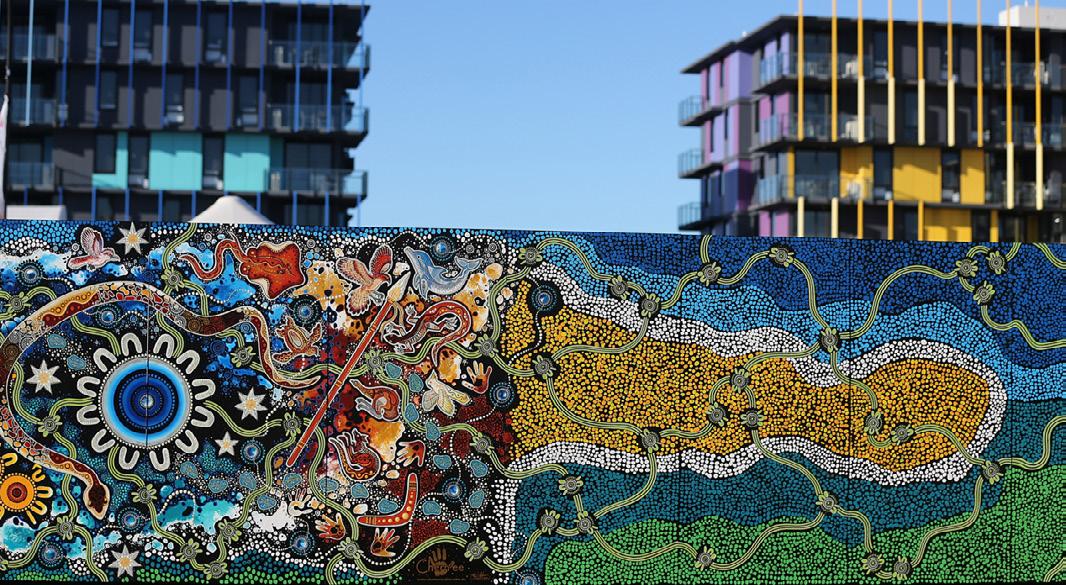
There are three zones in the Village: Operational, Residential and International. It is quite obvious that careful thought has gone into incorporating natural elements of water, wind, sun and shade into the construction within the zones.
The Operational zone houses a comprehensive, airport-like security system that athletes will be required to
clear. Special holding areas for team managers to check in and receive passes ensure that athletes focus on what they do best: sporting.
Once you’ve cleared security, make your way up to the residential zone. Named by Griffith University students, the residential zone is further divided by iconic Queensland features: Beach, Outback, Rainforest, Reef, Sunset and Surf. Mind you, it’s easy to lose your way in the labyrinth, but the designers and architects involved in creation of this masterpiece have used cartoon-like graffiti to indicate pathways to the different residential zones.
The 3,300 rooms are comfortable with two single beds and basic amenities. The residential areas boast of games-first cooling residential pools and state-ofthe-art digital spaces. At the heart of the zone, an artwork that reflects Gold Coast’s hinterland waterfalls and natural rock formations spans a water fountain instalment, it’s quite the spectacle.
Close by, the seven-hectare green area features enough space to hold concerts and live stage entertainment. Recreational options are aplenty, with dedicated rooms such as the Games Room that’s filled with arcade and video games, Village Gym that is upkept by professional staff, and the Athlete Recovery area that provides massages and consults from Sports Medics.
There’s also a dental van, doping test area and a poly-clinic that provides regular and emergency support 24 hours a day. This year the Games are also hosting the largest ever population of para athletes for the para-sport programme, so the entirety of the zone is fully accessible with specific prosthetic services as well.
Athletes will move around the Village in a fleet of shuttles and Games-branded cars as well as via the Gold Coast light rail network (G:link) station right across the road.
The last stop is the international zone, where players can mingle with friends and family and kick up their heels after a long day on the field. They can also enjoy events together, shop or visit the salon if they like. The zone also has multi-faith rooms, with one featuring artwork that represents the One Million Stars campaign to end violence.
Daytime cafes will convert to bars at night to keep the party going till the wee hours and promote camaraderie within and between teams. The main dining area has catering options to suit every taste, including a special section dedicated to Indian food!
Every requirement is taken care of by the 300-odd chefs, including dietary, religious and medical, among others. On the way out, you also pass by dedicated country-specific rooms, with Australia’s room getting a front seat to the house! Those green and yellow colours are unmissable, to say nothing of the cute koala sticker to indicate authenticity. These spaces together will see every sportsperson, regardless of sport, come together and unite through patriotism.
Each player also gets to take home a canvas uniquely designed by a Griffith University student and a Commonwealth Games Branded Quilt with an indigenous design.
Gold Coast goes green
The Village now hosts Australia’s first 6-star green rated building. With over 1,06,423 trees planted on site; the area is a breath of fresh air, quite literally.
The accessibility decision was a purposeful effort, not only to the 300 para athletes that visit but also to their families, by including accessible sinks in kitchens and hearing loop systems in major meeting rooms.
With so many meals prepared in a day it was imperative to have a comprehensive waste management plan including industry leading waste streams to maximise recycling and avoid landfills.
After the Games
The Parklands redevelopment where the village now stands has 1,170 apartments that after the Games will become homes, many of which will likely be for Gold Coast Private Hospital staff and Griffith University students. The hub of retail and commercial space is likely to expand and integrate into what Queensland calls Gold Coast Knowledge and Health Precinct. All these units are available for purchase and rent soon after.
Last word: the one-hour tour was simply not enough to see all the amazing things the Games Village has to offer! One thing is for sure: we’re in for one hell of a time with this event. And if you haven’t already booked your tickets, now’s the time.
8 APRIL 2018 www.indianlink.com.au
COVER STORY
Cooling pools, cafes that turn into bars by night, arcade games and more… the athletes headed to the Commonwealth Games Village at Gold Coast have a lot more than sporting to look forward to
Photos:
The Village now hosts Australia’s first 6-star green rated building. With over 1,06,423 trees planted on site; the area is a breath of fresh air, quite literally




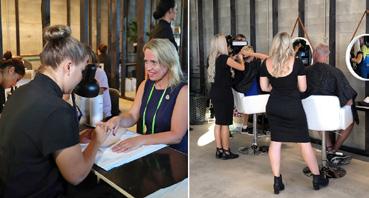

APRIL 2018 9
Who we will be watching
The Gold Coast Commonwealth Games 2018 are just around the corner (from April 4-15), and team India is all set to make its way Down Under. Here’s a quick lowdown on some of the players of the 325-member contingent from India. While athletics and shooting have the most number of participants (31 and 27, respectively), weightlifting has 16 and wrestling has 12 players.
P V Sindhu
Star shuttler PV Sindhu who has skyrocketed in popularity all thanks to her spectacular feats in the recent times, will be the official flagbearer of the Indian contingent this year. Back in 2014, pistol shooter Vijay Kumar had the honour. Sindhu, an Olympic silver medallist at Rio in 2016, also won a bronze in the 2014 Glasgow Commonwealth Games. Currently, the badminton player is at

World Number 3, and is a top contender, especially as top competitors Japan and China aren’t a part of the Games.

Vinesh Phogat (Wrestling)

Vinesh Phogat comes from a family of winners. The daughter of wrestler Mahavir Singh Phogat’s (on whose life the Aamir Khan starrer Dangal is based) brother Rajpal, and cousin of international medalists Geeta Phogat and Babita Kumari, Vinesh is no stranger to the Commonwealth Games. The 23-year-old, who represented India in the women’s freestyle 48 kg category at the 2014 Commonwealth Games in Glasgow, won the gold medal.
She has also made her mark in numerous other championships, such as the 2013 Asian Wrestling Championships (bronze), 2013 Commonwealth Wrestling Championships (silver), 2014 Asian Games (bronze) and the 2015 Asian
Championships in Doha (silver). In 2017, Phogat claimed gold at the National Wrestling Championships.
Her fans in India have high hopes from Phogat, hoping she can recreate the magic of the 2014 Games in Australia this year.
Manavjit Singh Sandhu (Trap Shooting)
To call Manavjit Singh Sandhu a Commonwealth Games veteran would be an understatement. The 41-year-old has since 1998 proven time and again a boon for the Indian contingent. A former World Number 1 in trap shooting, Sandhu has won three Olympic medals, three team golds and two individual golds at past Commonwealth Games from 1998 to 2014.

It’s this winning streak at the past Games that made it sailing into the Gold Coast team a breeze for the shooter. In a nutshell, he’s worth his weight in gold.
Neeraj Chopra (Javelin throw)
Another sportsperson to make his debut at the CWG this year is 20-year-old Neeraj Chopra. The javelin thrower from Haryana is a top contender for gold – and for good reason.

Chopra first made waves when he won the gold medal at the IAAF World Under-20 Athletics Championship in Poland in 2016. Not only did he win the top prize, he also, for the very first time for India, broke the world record with an impressive feat of 86.48m throw. It’s no wonder that his former coach Gary Calvert calls him a “once-in-a-generation-talent”.
Recently, Chopra officially made the cut in his sixth attempt at the Federations Cup Championship in Patiala where he managed 85.94m. If he can stick to his target of throwing consistently over the 85m mark, there’s a bright chance for him to win a medal for India.
10 APRIL 2018 www.indianlink.com.au CWG
P V
Vinesh
Sindhu
Phogat
Manavjit Singh Sandhu Neeraj Chopra
Sathiyan Gnansekaran
Sathiyan Gnansekaran (Table Tennis)
This 25-year-old table tennis player is in the spotlight for his spectacular rise as one of India’s finest. Gnansekaran shot to fame in 2017 when he scooped up medals at the International Table Tennis Federation. In fact, he’s only the second Indian paddler to win a singles event in 2016, defeating local player Nuytinck Cedric 4-0 in the Belgium Open. He also won gold in the ITTF ChallengeSpanish Open in 2017 in the men’s singles category.
India has hopes pinned on this year’s table tennis team, especially since the top players of the sport from China and Europe won’t be taking part in this year’s CWG.
Gnansekaran is world number 49 at the moment and this will be his first Commonwealth Games.
followed it up with two golds in the 2016 Nationals, eight in 2017 Nationals and then one in the Asian Airgun Championships in Japan.
Interestingly, Mehuli ended up sliding into depression a few years ago following her suspension when one of her pellets hit a spectator at a shooting academy in Kolkata. Now, however, the girl who counts four-time CWG gold medallist Abhinav Bindra as her inspiration, has come a long way and definitely worth keeping an eye on.

Srihari Nataraj (Swimming)

He’s only 17 years old, but Bengaluru’s Srihari Nataraj is already making waves, pun intended. This young gun, who counts Michael Phelps as one of his biggest influences, won his first medal at the National Swimming Championship in 2010
Jitu Rai
Seasoned shooter Jitu Rai has put the setback of the Rio Olympics in 2016 behind him and is confident of a podium finish. The Nepal-born shooter, who was a 50m pistol gold medallist at the 2014 Glasgow CWG, says he’s been working on his mental and physical strength conditioning for the Games and is very happy with his preparation. The shooter recently said he was disappointed by news that the 2022 CWG may drop the sport but said that India shouldn’t boycott them.

MC Mary Kom (Boxing)

The 36-year-old boxing champ from India is a special point of interest –wondering why? Although she has trailblazed her path into the world of boxing championships with numerous accolades – like her five wins at World Championships and an Olympic bronze medal – there’s one that has been out of her reach: a Commonwealth Games medal.
Mehuli Ghosh (Shooting)
Teen shooting sensation Mehuli Ghosh, fresh from bagging two bronze medals at the ISSF World Cup in Guadalajara, Mexico, has now set her eyes on breaking a senior world record by the end of 2018. The shooter first made her mark at the West Bengal state junior championship with two silver medals in 2014 and
after which there was no turning back. His claim to fame moment came at the Senior Nationals in 2017 after winning all three backstroke events – 50m, 100m and 200m – in each of which he created a record. More recently in February, the swimmer bagged six golds and a silver at the Khelo India School Games. With great performances to his credit, Nataraj is one to watch.
Women’s boxing was included in CWG only in 2014 and unfortunately Kom didn’t qualify for the event back then. But the boxer isn’t giving up, not yet. Her return to the sport in 2017 when she won her sixth medal at the Asian Boxing Championships in Vietnam is proof that she’s a master of the game and could very well be counted upon to bring back a medal or two.
Indian hockey team

How can we talk about Indian sports and the Commonwealth Games and not mention hockey?
Although the Indian men’s hockey team has never won a gold medal at the Games, one can always hope. The team came home with silver during the 2010 and 2014 Games in New Delhi and Glasgow, respectively. Give their fifth position at the Azlan Shah tournament, hopes are running high.
The women’s hockey team bagged a gold at their debut in the 2002 Manchester Commonwealth Games, and then a silver at the 2006 Games in Melbourne. After winning their recent five-match series in South Korea, the team’s confident of making a mark in the 2018 Games as well. The recent changes in both teams in terms of strategy (more attack, less defence) promise to improve their game considerably.

APRIL 2018 11
Star shuttler PV Sindhu who has skyrocketed in popularity all thanks to her spectacular feats in the recent times, will be the official flagbearer of the Indian contingent this year
Mehuli Ghosh
Srihari Nataraj MC Mary Kom
Womens Hockey
Mens Hockey
Jitu Rai
Fighting for her dreams
Rupinder Kaur gears up for Gold Coast 2018
player in my category!”
BY RAJNI ANAND LUTHRA
There’s only one major preoccupation in Rupinder Kaur’s life these days. Training.
Only days out from the big event, she’s currently training three times a day every day.
The 33-year-old is part of the Australian wrestling team for the upcoming Commonwealth Games at Gold Coast.

“I’ve been working with the national coach as well as my personal coach in recent months,” Rupinder told Indian Link “I’m giving it my all.”
Looking forward to her second Commonwealth Games, Rupider admitted she feels stronger now than she did at Glasgow in 2014. She credits this to her young Russian-origin coach Kostya Ermakovich, himself a seasoned international competitor.
Rupinder will take the floor in the 50kg category, alongside an old friend from India, Vinesh Phogat, who was made famous by a certain Bollywood hit film not so long ago.
Does she see Vinesh as a major competitor?
“We’ll see on the day, won’t we!” she laughed. “There’s also Jessica MacDonald from Canada and another strong Nigerian
But she is enjoying catching up with other friends from India’s boxing world Babita Phogat, Mary Kom and Sakshi Malik in various camps in the lead up to the Games. Her closest friend Navjyot Kaur, who represented India at Glasgow, will however, not be there this time round.
Glasgow is a memory that Rupinder has put squarely behind her. As someone who had always played in the 48 kg division, she was shocked when she weighed in at just over 49 kg before her selection. The gain in weight meant that she would be placed at the next level, the 53 kg division. With but a week to go, Rupinder worked hard to lose the extra kilo, but ultimately weighed in at 48.2 kg. She ended up competing in the 53 kg division.
“I’ve been a steady 50 kg for some time now,” Rupinder revealed. “I’ve had a baby since Glasgow – who is now two. I weighed 70 kg after she was born and have worked my way down steadily.”

We are not surprised, especially after seeing her do her squats and HIRTS. She may be petite, but she is strong!
As a vegetarian, she is packing those proteins in with some hearty Punjabi meals.
Yes, she remains a simple Punjabi girl even after more than a decade in Australia.
She came here as a hospitality student from Tarn Taran in Punjab - where she felt shy to put on her first wrestling costume at school.
“I did not know a thing about wrestling in Australia, but I was hell bent on finding out”.

It was at a local Diwali function that a family member introduced her to Kuldip Singh Bassi, founder and president of the United Wrestling Club in Melbourne. Rupinder was back on the mat in no time. Before long, she was winning championships such as the Australia Cup.
To compete at the international level though, she had to wait for her citizenship to come through.
She won the bronze at the Commonwealth Championships at South Africa recently.
Rupinder started her fight career in judo as a Year 6 student. In Year 12 she was asked to give wrestling a try.
“Yes I felt a bit shy to put the costume on – with judo there had been no costume issues! Mum was concerned about injuries. But Dad told us both to stop being silly! As an army man he wanted his children to try as many new experiences as possible. My first performance came good, and I have never looked back”.
Kuldip Bassi, who also helped bring out Kostya Ermakovich from Uzbekistan in 2003, has been in constant touch with his ‘protégé’.
“I see a much stronger and more dedicated Rupinder these days,” he told Indian Link. “The training has been methodical and of a high standard, and she is much more determined herself.”
The hardest part about the training, she revealed, has been long periods away from her daughter. “We packed her off to India for 6 months to be with my mum. Mum has brought her back now and will be with us
for a while. My husband Sikander is very good with the bub too and helps out a lot.”
As well, she admitted, the lack of a local sponsor has been worrisome.
“My team mates all have sponsors; some have three. It goes a long way considering we spend all day training. At the moment my husband supports me, but I wish my call out for a sponsor would be heard.”
There are many in our own community who sponsor events and shows and it would be nice to see some support from them, she added.
A medal at Gold Coast would also go a long way for the sport in this country.
“Wrestling ka status high level ka nahin hai (wrestling does not have high status),” she lamented. “Most wrestlers have moved in from Mixed Martial Arts or jujitsu, and there are just not enough girls, sadly. The team for Gold Coast has only 8 wrestlers, 5 males and 3 females.”

Rupinder follows fellow-Melbournian Sandeep Kumar, another Indian-origin wrestler, who represented Australia at the Beijing Olympics. Vinod Kumar, another Indian-origin wrestler was dropped from the Rio Olympics team after a failed drug test.
Days before Glasgow, we had asked Rupinder if she knew the words to the Aussie national anthem. You know, just in case.
“Bilkul aata hai jee,” she had come back then. This time round, she informs us that she’s been singing it frequently, together with her team mates.
Here’s hoping she gets to sing it a few times at Gold Coast.
12 APRIL 2018 www.indianlink.com.au CWG
Photo: Sydney Westling Photos























































APRIL 2018 13 CWG 2018 team mates
Fun at training
The Australian team
WithMaryKom,India’sstarboxer
A tale of two standards: Cricket in crisis

Tip of the iceberg: Shock ball-tampering confession reveals only part of the Australian cricket team’s toxic culture
BY RITAM MITRA
The current Australian cricket team does not sledge the opposition any more than its predecessors. Nor is it any more aggressive in its approach to the game or its dedication to “play hard”, as has always been the side’s wont.
But this particular team, under the leadership of Steve Smith and Darren Lehmann – suffers from such a hopelessly pathetic lack of self-awareness that, in one ill-fated tour, it has tarnished forever the legacy of the great names in whose shadows it lies.
From the initial flashpoint between
David Warner and Quinton De Kok in Durban, to the moment Cameron Bancroft stashed in his underwear a piece of tape he used – or was directed to use – to alter the condition of the ball in Cape Town, this tour has revealed at every stage the staggering hypocrisy that pervades Australian cricket today.
Cricket Australia’s official complaint and condemnation of the Cape Town crowd’s behaviour, for instance, is wilfully ignorant to the international notoriety of Australian crowds for being the most hostile towards visiting teams.

It is not for no reason that they are referred to as the team’s 12th man (with the ruthless Australian media playing 13th fiddle).
After subjecting Virat Kohli to vile slurs about his sister and mother during the Indian captain’s first tour of Australia in 2012, Australian fans and media alike
ridiculed Kohli for sticking up his middle finger in response to the sustained abuse.
Those responsible were not reprimanded, and no official complaint was made by the BCCI. Kohli accepted a fine of 50% of his match fee.
Yet a similar slur directed at Warner at Newlands – which, in contrast (and rightfully so), resulted in the spectator being ejected from the stadium – has escalated a row at the management and board levels which stinks of double standards.
Lehmann, an allegedly reformed racist who in 2003 called the Sri Lankan team “black c***s”, has slammed the behaviour of Cape Town crowds as “disgraceful”.
Lehmann conveniently forgets his recent call to arms for Australian fans to abuse English fast bowler Stuart Broad and make him “cry” over his “blatant cheating”. The irony would be delicious if
it was not so disappointing.
In the same way Warner has been assigned protection by Cricket Australia’s head of security at the boundary to guard him against hurtful comments directed at him from the Cape Town crowd, there are suggestions Cricket Australia should provide to visiting teams a comprehensive security detail stationed around each of its grounds for the same purpose.
To the main incident which has cast a red hue over the moral high ground Australia has habitually adopted in all these preceding events – it is astonishing on so many levels. It is unbelievable that no one within the so-called “leadership group” had the slightest ounce of integrity or courage to speak out against the proposed course of action. Would Border, Taylor or Waugh have stood idly by? Not on your life.
It is also inexcusable that this was a
14 APRIL 2018 www.indianlink.com.au
SPECIAL FEATURE
Photos:
Umpires question Bancroft at the third cricket test between Australia and South Australia in Cape Town
Photo: AP
pre-meditated plot rather than a spur of the moment decision, begging the question as to how often Australia has cheated in the past under Smith, when scrutiny of player conduct may not have been as high, or when match situations have been more dire.
Smith’s assurances that this was the first time are worthless; a player’s first decision to tamper with the ball is not one that he arrives at in pre-meditated concert with other senior team members.
Moreover, footage has re-emerged of Cameron Bancroft piling sugar into his pockets during a tea break during this year’s Ashes test in Sydney purportedly in preparation for ball-tampering, as will other suspect footage undoubtedly be scrutinised and released in the coming weeks.
But it is unthinkable that Bancroft, a new entrant to the proudest of Australian sporting fraternities, would habitually break the laws without direction, and so with Smith, Warner and Lehmann the buck must stop.
It is a shame that for a batsman destined to be the all-time great of his generation, Smith will be forever remembered as a cheat whose only remorse was in being caught.
Many have pointed the finger at cricket boards for being out of touch with public perception and allowing toxic corporate cultures to filter down to players at the highest levels. Dr G.K. Harinath, a former chairman of Cricket NSW
and one of the game’s most respected administrators, rejects these arguments, positing that restoring the team’s culture demands early intervention at the grassroots level. “You can’t teach culture and manners when you’re playing at the national level. Culture is taught when you’re playing junior levels of cricket to grade cricket,” says Dr Harinath.
“In years gone by, you had to play three years of fifth grade before you played fourth grade and so on,” continues Dr Harinath. “At each level, there used to be a senior player who would not only mentor the team but also teach them how the game was to be played in every way – respect for one another, respect to the game and to the opposition, umpires, scorers, people who are working in the game. Most importantly, the culture of respect starts at home and then it grows out. If you lack it at home then you lack it everywhere.”
It is no understatement that these are the darkest days Australian cricket has seen. The ball-tampering in itself is not the issue; teams around the world push the boundaries of what is strictly legal under the laws of the game, including by throwing the ball purposefully into the turf and using artificial substances to shine the ball.
Some would argue that ball-tampering ought to be legalised, to redress the balance between bat and ball.
But for now it remains illegal, and the circumstances of the incident reveal an
engrained culture of self-entitlement and a brazen sense of invincibility within the current team.
Just months after the players held the Cricket Australia board hostage during a pay dispute, pursuant to which senior players negotiated the largest pay deal in Australian cricket history, the same players have diminished the very value of the Australian cricket brand, with many high-profile sponsors expressing their concerns in the immediate aftermath of the incident.
Reflecting generally on the vitriolic international reaction to the Australian team’s conduct, Dr Harinath is philosophical. “We call ourselves one of the world’s best sporting nations,” he says. “Where do we stand? All the things which have been shown are a blot not only on our game but on our nation. Cricket is still the national sport of this country. Everybody wants to see what happens in the game, from plumber to politician, an old lady to a young male. But the sport’s image is tarnished. It’s very hard and it will take a few years for us to regroup.”
By continuing to pursue victory at all costs, Smith and Lehmann have only deepened further the schism with their biggest stakeholders, who would much rather lose with dignity than win in ignominy.
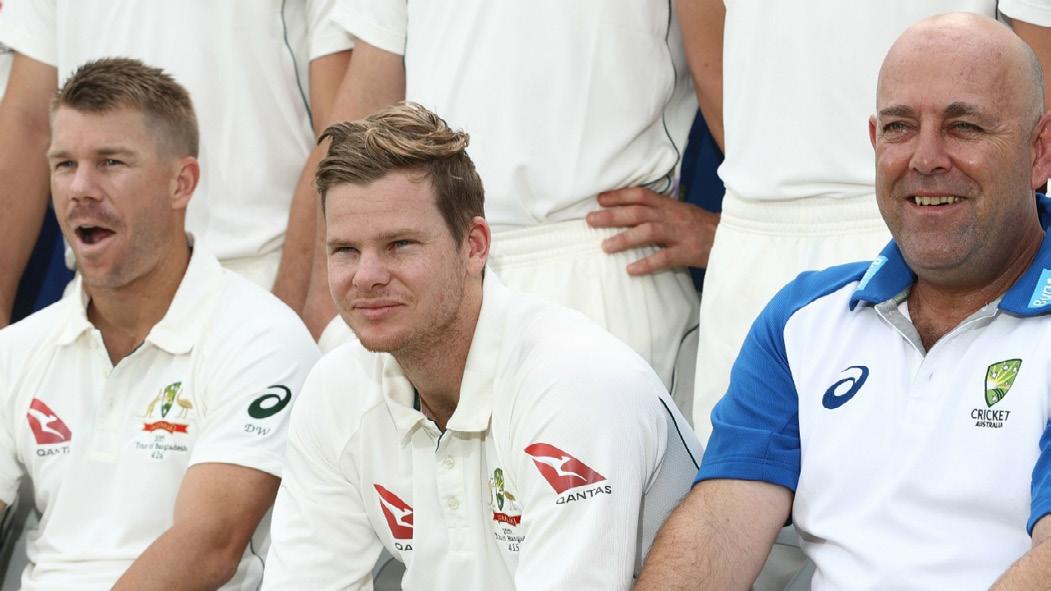
Australian fans, whose fierce pride is often undermined by the actions of those they idolise, deserve much better.
NO FAIR PLAY: A STRING OF BAD BEHAVIOUR
January 2018, Pretoria
> Virat Kohli ned for “constant complaining” to the umpires about a damp out eld
February 2018, Port Elizabeth
> Kagiso Rabada ned for making aggressive gestures after dismissing Shikhar Dhawan
March 2018, Port Elizabeth
> David Warner and Quinton De Kok ned after CCTV footage emerges of heated and personal stairwell bust-up Rabada ned and initially suspended for two matches after making physical contact with Steve Smith while giving the then Australian captain a send-off. Pace ace also gives Warner a send-off in the same match
March 2018, Colombo
> Bangladesh skipper Shakib Al Hasan ned after remonstrating with umpires and threatening to forfeit a T20 match against Sri Lanka
> Reserve player Nurul Hasan ned after scuf ing with Sri Lankan skipper Thisara Perera
> Bangladesh players reported to have been involved in breaking glass window of dressing room during celebrations
March 2018, Cape Town
> Steve Smith and Cameron Bancroft confess to ball-tampering plot with “leadership group”
> David Warner also implicated. All three sanctioned heavily by Cricket Australia.
APRIL 2018 15
In happier times: Warner, Smith and Lehmann
Australian fans, whose fierce pride is often undermined by the actions of those they idolise, deserve much better
Statement by sitar

the experimentation in musical sound - is that the album is a deeply visceral response to the ongoing global refugee crisis. The audience experiences each and every track with that humanitarian struggle in mind. Each track is like a window into the ongoing ordeal of the refugee experience and how it has been covered by the international media. Boat To Nowhere begins disarmingly but then takes a sudden, dramatic turn, becoming quite a dark piece by the time it ends. Remain The Sea has a passionate monologue by Vanessa Redgrave. A rap segment by M.I.A. plays on a loop in Jump In (Cross the Line)
On stage accompanying Shankar are renowned percussionist and hang player Manu Delago - who also co-wrote this album along with Shankar - bass and keyboard player Tom Farmer and shehnai player Sanjeev Shankar (who was a student of Ravi Shankar).
Delago’s skills as a percussionist stand out. The way he plays hang, modulating its sound to the extent that at times it has the effect of the tabla and at other, more docile moments, it also has the affectation of a jaltarang, is something to behold. Having shehnai in the setup is also a beautiful arrangement. The instrument has such a distinct sound quality that you can’t help but be drawn to it. The shehnai sections in Secret Heart will melt you and then by the time you get to the jugalbandi of sorts between Anoushka’s sitar and Sanjeev’s shehnai in Reunion, you really start to wonder why don’t you get to hear the shehnai more often in musical arrangements.
BY VIRAT NEHRU
It’s been eight long years of waiting to witness Anoushka Shankar perform live once more on Australian shores. She was last here on tour in 2010, along with her father, sitar maestro Pandit Ravi Shankar.
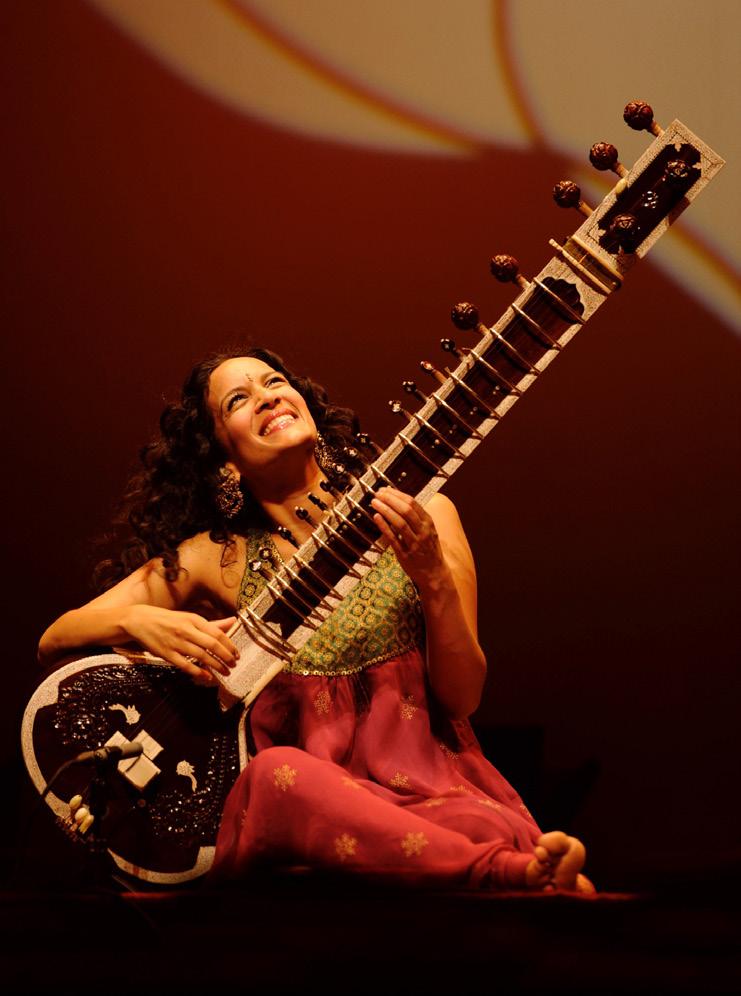
A lot has changed in these eight years - for example, Australia has changed way too many Prime Ministers - but Anoushka’s creative ingenuity in experimenting with the many ways in which Indian classical music can be presented to the world has remained not just steadfast, but seems to have increased with time.
Since 2010, Anoushka has released four albums, each markedly different in tone, sensibility and how Indian classical music is fused with global musical styles to give a truly unique offering. Traveller (2011) mixed Indian classical with Spanish flamenco, exploring how these two traditions so different on paper, might actually have the same spiritual DNA. Her next album, Traces of You (2013), brought about a memorable collaboration with her half-sister Norah Jones, with Norah lending her vocals to three tracks on the album.
However, if you are a ‘purist’ when it comes to Indian classical music (which you really shouldn’t be, but that’s a debate for another time), then Home (2015) might just be the album for you. I wouldn’t necessarily call it a return to her classical roots - because I don’t believe she ever left - but yes, it is an unadulterated display
of what magic Indian classical music can create on its own. The raga khamaj in that album is to die for.
And this brings us to Land of Gold, her latest album, that she drew material from on her return to Australia. Continuing in her journey to give audiences different entry points to Indian classical music, this album has a very different sound and sensibility to her previous efforts.
One of the more important elements that sets Land of Gold apart from Shankar’s other work - not disregarding
Tom Farmer (who looked ravishing in a kurta, just as an aside) comfortably switches back-and-forth between keyboard duties and the double-bass. You wouldn’t imagine that a sitar, shehnai, double-bass and hang would make for a complimentary musical sound, but not only do these very different musical sounds fuse and glide over each other seamlessly, they each let the other flourish and take the audience to a musical high. A lot of this is possible because of the calibre of the musicians on stage, each masters of their craft. But a special mention would go to co-writers Shankar and Delago, for having the vision and imagination to write pieces that could envision such different musical elements working together in harmony.
Witnessing the ensemble on stage performing is an ethereal experience. It might have been eight years since we last saw Anoushka Shankar in Australia, but trust me, it’s been well worth the wait.
16 APRIL 2018 www.indianlink.com.au
MUSIC
Anoushka Shankar brings to Oz her new album Land of Gold, a touching response to the global refugee crisis
Each track is like a window into the ongoing ordeal of the refugee experience and how it has been covered by the international media
Pocketful of India
Craig Jeffrey ’s book on India packs a quick punch
BY RAKA SARKHEL LAHA
Modern India: A Very Short

Apart of Oxford’s Very Short Introductions series, Craig Jeffrey’s Modern India is a short and serious account of present-day India. Jeffrey, who is director and CEO of the Australia India Institute, takes keen interest in India - focusing his research on youth, education and everyday politics in India, and has six books related to these themes under his belt.
This book, Modern India: A Very Short Introduction, begins and ends on a hopeful note - the first chapter called Hope narrates an incident of a traffic hold-up by a group of school children in Uttarakhand, demanding a better maths teacher at their school. “Sitting in a circle on the bridge with their arms locked together they chanted their main demand and sang popular Garhwali songs,” he says. Three weeks later, a new Maths teacher arrived at the school.
The last chapter, titled Youth, also reiterates hope for India’s future, propped on the shoulders of her large young adult population. “One in ten people in the world are an Indian youth aged under 30,” the author notes. All the country needs to do, in order to be able to dream through its youth, is give them a robust institutional and infrastructural environment in the form of strong educational and healthcare systems, and
A protection we cannot a ord to lose
A flourishing society also requires more than just freedom of speech; it requires security, stability, a just legal system and a vibrant economy.
BY MATT KEAN
Australia is a country of great diversity. You can see it in the faces of the people that you work with. You can see it in the restaurants that line the main streets of our towns. And you can see it in the variety of religious and cultural events celebrated around the country: Chinese New Year, Diwali, Hanukkah, Ramadan and Christmas to name a few.
better employment opportunities.


However, primary education in schools is in a dire state, with “25 per cent of teachers absent from classes during spot checks across India… The Indian state has failed to raise spending on education, which remains roughly at 3%, well below the expenditure in many Western countries.” Higher education remains equally dodgy. Vocational learning suffers while rote learning with the myopic goal of clearing examinations still gets prime importance.
Further, the lack of employment and basic infrastructure continues to exacerbate poverty and social inequities, much like at the time of British imperialism.
Jeffrey also offers a brief account of

That is why freedom of speech is not absolute. In this country, it is criminal to disclose secrets which risk the lives of Australian soldiers. It is likewise a crime for a corporate executive to disclose market sensitive information to his mates. The law protects us from slander and protects privileged comments made to our lawyers.
the colonial period and how the East India Company filled Britain’s coffers by impoverishing India, and the nationalist movement that drove them out. The need for a new identity for a newly independent nation and the debatable notion of caste is also succinctly handled.
However, the treatment of the Aboriginal peoples in this country stands as a chilling reminder that tolerance has not always been embraced. The Cronulla riots similarly reminds us how quickly what we have achieved can be put at risk.
As a society, we recognise that these restrictions do not hurt our democracy or way of life. Indeed, we understand that they are necessary to maintain it. And laws against hate speech are no less necessary, because racism and bigotry tear at the heart of our social fabric.
for a newly independent nation and the

Hope again resurfaces in the chapter, Making India Work, with Jawaharlal Nehru’s speech on the eve of Independence on 14 August 1947 - “A new hope comes into being, a vision long cherished materialises.”
The proposed amendments to the Racial Discrimination Act were put forward on the basis that the current wording of Section 18C inappropriately constrains our freedom of speech.
Post-independence, reimagining and rethinking India was the main agenda for those at the helm. Jeffrey notes three major changes between 1989 and 1992. The first one relates to that of caste, where leaders from backward groups and classes became more active in politics. At the same time, another major change took shape in the form of Hindu nationalism with the formation of the Bharatiya Janata Party (BJP) in 1977. The third major
That section makes it unlawful to do an act in public which “is reasonably likely… to offend, insult, humiliate or intimidate another person or a group of people” if “the act is done because of the race, colour or national or ethnic origin of the other person


There is no doubt that freedom of speech is important but it is important because of the role it plays in our democracy. Freedom of speech ensures that when you or I go to the ballot box we can make an informed decision about who to vote for.
shift in the early 1990s was economic reforms that paved the way for substantial liberalisation through private sector participation, increased foreign direct investment and freeing capitalists from unhelpful bureaucracy and regulations. While the reforms reduced poverty, they deepened urban-rural and gender divides and aided religion and caste-based inequalities.
However, hope survived.
And strengthened itself through social revolutions that made a place in people’s conscience through the reach of technology and education, and the notions of citizenship and civil society. These have also played a big part in encouraging aspirations and cultural expression.
Racism and bigotry leave people feeling exiled in their own home. They do not improve the quality of public debate nor do they assist the wise completion of a ballot paper. They are insidious because they attack a person because of their identity; their heritage. They imply that a person is inferior because of who they are. They are hurtful, divisive and can lead to individuals and entire communities feeling unwanted, unvalued and second-class.
Apart from hope, Jeffrey also points out the country’s inherent conflicts and contradictions in its social and cultural fabric. It is perhaps difficult to qualify India under one single epithet, given her many contradictions. The wonder, however, is in the fact that she continues to thrive in her contradictions.


As a society, we recognise that restrictions on free speech do not hurt our democracy or way of life. Indeed, we understand they are necessary to maintain it. And laws against hate speech are no less necessary, because racism and bigotry tear at the heart of our social fabric
Freedom of speech is necessary so that as a community, we can debate political ideas and so that individuals can have a say on decisions that affect them.
Section 18C ensures that everyone has a role to play in that debate.
Comments today can also revive memories of past wrongs. Unfortunately, few ethnic groups have been spared the pain of racially justified persecution. Examples such as slavery in the United States and the Holocaust are well known. In recent times, the a vibrant, rich and diverse society. A society not focused on the differences between us, but founded on the strengths our differences afford us. Section 18C stands, not as a threat to freedom of speech, but as a protector of the purposes which that freedom serves, and as a guard to an achievement exceptional in this time and rare in times before.
Matt Kean is the Member for Hornsby and Parliamentary Secretary for Communities.

APRIL 2018 17
Introduction by Craig Jeffrey. Oxford University Press, 2017
BOOKS
who
AUGUST www.indianlink.com.au
OP I N I ON
A ourishing society requires more than just freedom of speech; it requires security, stability, a just legal system and a vibrant economy
Australians value freedom of expression but laws against hate speech are still essential
Section 18C
• Reliable Service and Privacy Guaranteed • Over 25 lenders to choose from • Commercial finance Health check for existing Home Loan “I used to think that all mortgage brokers are the same.... until I met Swati” – Komal Over 18 years of experience in finance industry. Talk to a qualified professional. Dandenong and Springvale Call Swati Palsule on 0411 78 28 18 Authorised Credit Representative 400349 of BLSAA Pty. Ltd. (Australian Credit Licence No.391237) Talk to a specialist for all your Home Loan needs THERE IS NO SUBS T I T U T E FOR EXPERIENCE. swati@buyerschoice.com.au ATTENTION OWNER DRIVERS $63,000 Per Annum GUARANTEED VTFE is privately owned and operated, established in 2010 we continue to experience substantial growth year on year. Come and work in a dynamic, friendly environment and experience why VTFE is a market leader in overnight parcel service Call Chris today on 0403 294 565 or email at Chrish@vtfe.com.au VicTas Freight Express (VTFE) requires 3 Tonne Transit vans and 6 to 10 Pallet Tautliners for set runs based out of Dandenong South > all you need is the Van or a truck and to be Incorporated (Company)
WHAT’S ON
COMMUNITY
Vaisakhi celebrations: Sikh Heritage Day
Sat 14 April (9.00am-5.00pm)
“Preserving the past, inspiring the future”. Sikh Heritage Australia presents Sikh Heritage Day at Presidents Park, Werribee. Free entry, free food, free rides for rides. Details
Ramandeep Singh 0430 159 817
Vaisakhi Festival
15 April (11.00am-4.00pm) Cultural performances, Indian cuisine, street food, kids’ activities and much more. Epping Memorial Hall, 827 High St, Epping. Details Navdeep Virk 0433 745 524
Vaisakhi Mela
15 April (3.00pm onwards) Creative Events proudly presents Vaisakhi Mela by Jazzy B Miss Pooja at Sandown Park Racecourse, Springvale. Details
Shinkoo 0435 779 544
Colourfest Melbourne
Sun 29 April (11:00am-4:00pm)
Moonee Valley Racing Club, 1 McPherson St Moonee Ponds. Details
1300 338 368
Basant Festival 2018
1 April (11.00am-6:30pm) Girls Association of Pakistan Australia
announces Melbourne’s fourth Basant Festival. Kite ying, kids’ entertainment, traditional Pakistani food stalls and live Punjabi dhol. Rock up in your traditional yellow colour shalwar kameez at 19 Carrington Drive, Albion Polish Community Centre Melbourne. Details Facebook.
SPIRITUAL
Shiva Parvathi Kalyan Utsav
Sat 14 April (6.00pm-8:30pm) Shiva Parvathi Kalyana Utsav in celebration of Tamil New Year will be performed at Sri Sai Siva Vishnu Temple, 5/4 Shaft Crt, Hoppers Crossing. Join in for the wedding ceremony followed by annadhanam dinner. Ph 03 8360 7000
Kid Friendly Kirtan
21 April (3:30pm-6.00pm) An event for Hills families to come together in soulful singing. Share singing sacred mantras to music with our children –in the space of the heart. Chanting will be followed by a shared meal. This is a free community event. Upwey Primary School 15 Darling Avenue, Upwey. Helpers welcome for set up and pack up. Musicians and kirtanists also very welcome to contribute. Please bring a plate of food to share, preferably labelled. Bring cushions/blankets or whatever you need to sit comfortably on the oor.
STAGE
Akhada Live
1 April (5:00 pm) Punjabi By Nature and Indian Kitchen presents Akhada Live concert at the Thornbury Theatre, 859 High Street, Thornbury. Artists include Himanshi Khurana, Jass Bajwa Gurjazz and Harf Cheema. Details Deepak Sharma 0450 687 786
Sangeet Sandhya
Sat 7 April (7.30pm onwards)

Melbourne-based singer Jyoti Rupa Mishra performs. Brandon Park Primary School, 1-5 Ninevah Cres, Wheelers Hill. Details Neeraj 0452 669 305
Melbourne Telugu Maha Sabha
Sat 14 April (3.00pm-7.00pm)
TAAI (Telugu Association of Australia Inc) presents Rasa Raaga Sudha 2018 featuring Dr. Brahmanandam, Meegada Ramalinga Swami and singer Kumari Satya Yamini. Williamstown Town Hall, 104 Ferguson St, 3016.

Details 0402 184 166
Hindustani classical vocal Sat 14 April (4.30pm-7.30pm)
Manmohini Events presents Kaushiki Chakraborty, one of India’s best known young female vocalists, in her rst performance in Melbourne. George Wood Performing Arts
REALISE YOUR
Centre, 84 Kalinda Road, Ringwood. Details Mangirish 0450 451 285 Fri 13 April (7.00pm-9.00pm) Dinner with Kaushiki Chakraborty at Calcutta Club 223 Nelson Place, Williamstown. Details Roy 0406 339 288.
Stand Up Comic: Zakir Khan 14 April (7.00pm onwards) Corner Glenferrie Road and High Street, Malvern. Details varun.chhabra96@ gmail.com
Indian All Star Comedy Showcase 20-22 April (8.30pm onwards) The Melbourne International Comedy Festival presents the Indian AllStar Comedy Showcase at Kindred Bar Footscray. Taking to the stage are comedians Sorabh Pant, Aditi Mittal, Azeem Banatwalla and Rahul Subramanian. Details www. comedyfestival.com.au
MISC
‘Special Moments’ with Bollywood personality Dia Mirza Sun 15 April The Thornbury Theatre, 859 High Street Thornbury. Details SMS DIA MIRZA MELB to 0452 337 387
To list your event email: media@indianlink.com.au
We have several retail properties for lease on Long Term and Casual Leasing basis in DOCKLANDS Melbourne Would suit Medical /Dental Practice Restaurants/Cafes and all other type of Retail outlet Generous lease terms can be negotiated with the right tenant.
Don’t miss this opportunity, call Ranjith on 0430 135 888 or Muthu on 0433 543 007 to arrange a viewing immediately. You won’t be disappointed.
18 APRIL 2018 www.indianlink.com.au
BUSINESS DREAMS AND POTENTIAL AT THE WATERFRONT IN DOCKLANDS MELBOURNE
DO IT ANYTIME
Even if you couldn’t volunteer for World’s Greatest Shave between March 14-18 when the initiative was underway, don’t sweat it. You can do it any other time of the year, just like 27-year-old Smit Shah, who plans to sit in the hairdresser’s chair in May this year. Smit, a Senior Analyst at Deloitte in Perth, says the event seemed like a really fun way to do more charity work. If you’d like to donate to Smit’s cause, click http://my.leukaemiafoundation. org.au/smitshah
If you too want to donate on another date, all you have to do is call the Leukaemia Foundation on 1800 500 088 to discuss a time that suits you.
Hair for care
Sydney couple Parul and Varun Batra do their
for cancer research . NEHA MALUDE reports

It was a cut with a cause. Sydney couple Parul and Varun Batra on 14 March took part in the World’s Greatest Shave (WGS) initiative to raise money for cancer research.

Having taken the brave decision to shave their heads, the couple has raised over $4,000, but is keen on raising at least $6,000 for the cause.
As you might know, volunteers get sponsored and the money they collect goes towards research for finding better treatments for leukaemias, lymphomas, myeloma and other related blood disorders. In Australia, a staggering 60,000 people are diagnosed with blood cancer and related disorders, the third most common cause of cancer death.
Varun tells Indian Link that his wife is the reason they finally took the plunge this year. “Parul has wanted to do this for sometime now, so this year we decided to go for it together. We thought the collective focus would increase support for the cause,” he says.
Going bald, especially for an Indian woman, is a big step. For most women, hair is more than just a part of their looks, it’s a part of their identity. Did Parul feel that she would lose a part of her identity or change her persona in a significant way?
“The only change,” Parul replied, “is that we feel a lot colder!” She added, “Did it feel strange? Of course. But to be honest, excitement was the over-riding sensation!”
The money they have managed to raise has boosted their confidence. “This has definitely motivated us to do more to
make a difference. But the movement needs far more support. Parul and I are certainly going to try and find more ways to contribute to this event, not just in cash but in kind too,” Varun says.
Did they face any resistance or backlash from family? “Our families were a bit stunned at first, sure. But they came around, and when we told them why Parul and I were participating in this event, they were immensely proud of us,” Varun said. “Of course, Parul and I supported each other right from the beginning.”
In the past, Indian Link has reported on how two Sydney-based women, Deepa Hariharan and Vani Chandra, stepped up to the challenge and shaved their heads as part of WGS. While Deepa decided


support the cause by raising $3,000 after a dear friend lost her life to brain cancer, Vani raised more than $5,000 for the Leukaemia Foundation by shaving her locks on her birthday.
This year marks 20 years since World’s Greatest Shave was started by the foundation in 1998.
What’s more, the foundation recycles ponytails into wigs and turns hair clippings into compost or floating booms to absorb oil spills at sea. Not only do you end up helping improve the life of a cancer patient, but also the environment. It’s a win-win all the way.
Check out https://worldsgreatestshave.com/ to know more.
How the money helps
Volunteers earn badges depending on how much money they can raise.
Here’s what the badges mean:
Helping Hands Badge $250.
Enough to enable a family to attend a support program speci c to their blood cancer.
Sleep Easy Badge $560. Enough to give a regional family a free place to stay close to treatment in the city for one week.
Beep Beep Badge $1200. Enough to provide free transport for people who are too ill to drive after chemotherapy treatment, for two weeks.
Breakthrough Badge $2000.
Enough to aid future breakthroughs by funding a major blood cancer research project, for one week. Discover Badge $4800. Enough to fund 3 months of lab costs for a research project to discover better treatments for blood cancer.
Life Saver Badge $10,000. Enough to provide emotional support to help 300 families overcome the initial shock and stress of being diagnosed.
APRIL 2018 19 FUNDRAISER
bit
A taste of India
BY NIKITA KULKARNI
For the second year in a row, Foodie Trails brought to us the Indian Festival at the Queen Victoria Market, filled with colour, music and as always, some pretty amazing food.
As you walked into the market you could hear a tune in the air, a call to you if you will, guiding you through the market to where the fun was… and that’s when the aroma hit. With those wonderful smells of masalas and chai, Queen Victoria Market – or a section of it – transformed itself into Delhi’s iconic Chandni Chowk.
All around were sights you would walk past on a regular Indian street, right down to the pani puri stall in the corner.
But this was Melbourne, and the food trucks were waiting. From just an entrée to a full blown meal to a bit of kulfi on your cheat day, this event had it all.
And then chai… oh, how the chai was enjoyed, given the cold and wet weather!
This year the weekend-long festival - part of the Melbourne Food and Wine Festival - was bigger, attracting some better-known food names. Two Fat Indians, Babaji’s Kitchen and Kailasa were there, as was the Original Chai Co and new kid on the block Chuana.

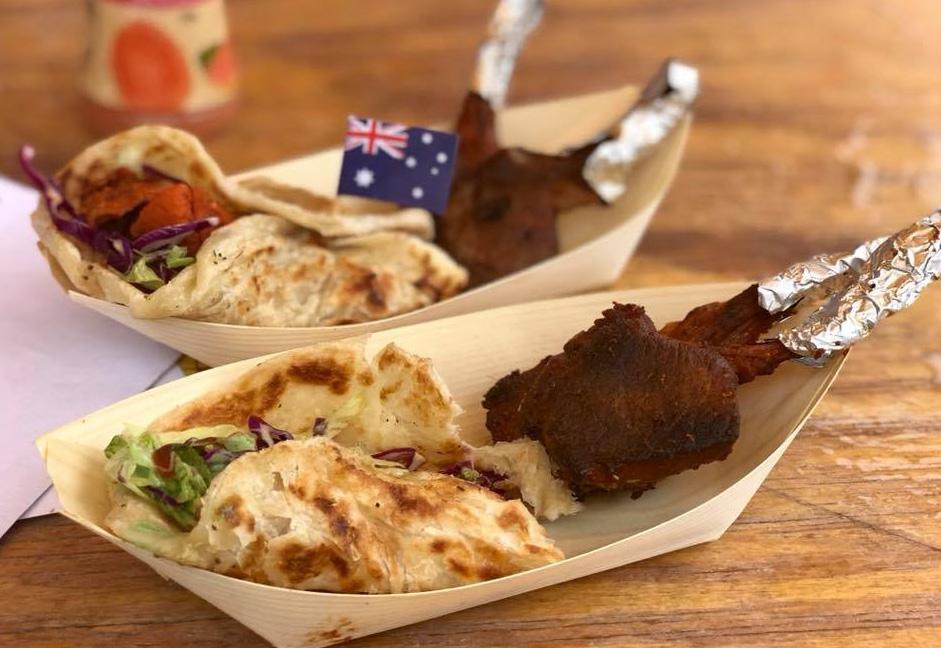
A surprise drop in was Chef Saransh
Goila of Mumbai, known as the “world’s best butter chicken chef”, brought out to Australia by MasterChef celebrity George Calombaris to open a pop up.
All of these elements made the VIP Foodie Experience a must-try, with its special tasting
menu and designated service area.
The VIPs, they came too: Rakesh Malhotra, Acting Consul General of India (Melbourne) agreed to inaugurate the event, and the City of Melbourne, event supporter, deputed Councillor Beverley
Pinder to attend as well.
The footfall at the weekend-long Festival left organiser Himanshi Munshaw-Luhar pretty pleased.
“It was a weekend that was dominated by Cultural Diversity Week events.
Victoria’s Multicultural Festival was on at Federation Square, as was the Dandenong World Fare, and of course, the Grand Prix was a major event city-wide,” she told Indian Link. “And to top it off, the first of the two days saw bad weather! But in the spirit of the festival all the vendors stayed put, in the cold and the wet!”
No Indian festival, even one dedicated to food, is complete without other moods of India, namely the music and dance, and the bling and the glare.
Community favourites Naach Box delighted with their dance moves as the eager crowds joined in the jhataks and mataks. Raanjhe Bhangra’s rambunctious folk beats lifted the spirits like only they can, and the melodic sounds of The Fifths reached out to the desis with their all-time classic hits.
Dress-up opportunities, henna, kidzone, cooking classes, all added to the appeal.
And the sari-clad stilt walkers? Yes, they were definitely the first ever in the country!
What started off as a cherished dream for Himanshi Munshaw-Luhar, looks set to be an annual event today.
Plans are afoot already for next year, Himashi reveals – and the date is set for Diwali, India’s very own “silly season” in which food takes centrestage. The sweet sensations of Diwali: coming to the Queen Vic in 2019!

20 APRIL 2018 www.indianlink.com.au
FESTIVAL
The annual Indian Festival at Queen Victoria Market is much more than foodie delights












APRIL 2018 21
End of an era
The India Tourism office in Sydney is winding up after over 50 years in operation
BY HARSHAD PANDHARIPANDE
In a move that has left several members of the Australian tourist industry shocked, the India Tourism office in Sydney will wind up its operations on 31 March. The office had been functioning here for over 50 years.
The move comes as part of the Government of India’s larger rationalisation and restructuring of all 14 of India Tourism’s overseas offices.
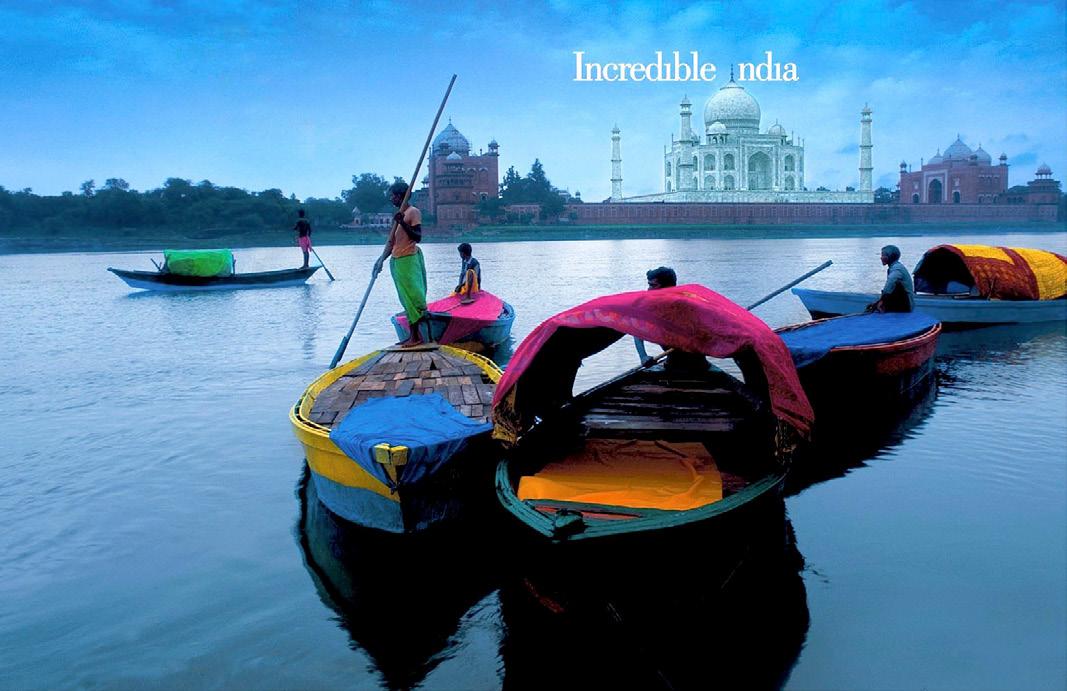
Kanchan Kalia Kukreja, Assistant Director of India Tourism Sydney, refused to comment on the issue, saying that she was not authorised to do so.

However, confirmation came from India’s Minister of Tourism Alphons Kannanthanam, who has been quoted in an official press release as saying that the Ministry has decided to close its foreign offices at Los Angeles, Toronto, Sydney, Amsterdam, Paris, Milan and Johannesburg ‘in the near future.’ The media release said that the ministry will open a new office at Moscow. Thus, the Ministry of Tourism will now have offices at New York, Dubai, Frankfurt, Moscow, Beijing, Tokyo, Singapore and London.
Sources said that the India Tourism office in Singapore will look after the Australasia region now. There is word that
the winding up of the Sydney office could happen as early as 31 March, but there was no official confirmation in this regard.
India’s Tourism Secretary Rashi Verma has been quoted in industry publications as saying that India Tourism is creating some major hubs in the international market. India Tourism will have eight hubs and other countries will be served by India Tourism Marketing Representatives. The hubs will engage PR agencies who will work in some of these key and emerging markets.
Other reasons being talked about unofficially in travel circles are: lack of senior officials in key positions, inability of present staff to adapt to requirements of changing markets, and, most importantly, the very question on the viability of having physical tourist offices in the age of internet.
But many in the travel industry aren’t fully convinced. They say that the decision
will derail the inbound foreign tourism traffic that has been having tremendous growth in India in the last few years.
The development is even more disappointing, coming as it does on the back of news that India has emerged as NSW’s fastest growing overseas tourism market with a record 147,000 Indian visitors coming to NSW in 2017, a 121 per cent increase compared with 2012. Expenditure by Indian visitors to the state has nearly doubled in that five year period to $337 million.
It’s a case of bad timing for Air India as well, which is adding another nonstop flight from Sydney to New Delhi from 31 March, ironically the same day India Tourism Sydney is winding up. Its officials here would be praying that this decision does not run counter to its goal of getting more and more non-Indians to make Air India the preferred airline to India. Will it work? That’s something only time will tell.
May be in its absence, the office will prove how vital it is. After all, it provided ample evidence of how its presence helped drive up Australia’s tourism numbers to India. How?
Let’s wind back the clock a little.
Australia was one of the first markets where the Government of India opened a tourist office. Although exact dates are unavailable, it is believed that the office opened in Melbourne just before the city hosted the 1956 Olympics. After functioning there for a few years, the office relocated to Sydney and has been operating here since, becoming, during the pre-internet era at least, a one-stop shop for information about all things India.
Shanker Dhar recalls those days with fond nostalgia. Just as well, because the Sydney office saw its golden period under Dhar, who served as Regional Director here in three stints, aggregating about a decade, between 1987 and 2007. With his knack for innovative ideas and an easy affability, Dhar made quite a mark within Sydney’s Indian community as well. No wonder then, that after superannuating in 2007, he settled down here.
Saying that he is ‘shocked and saddened’ by the decision, Dhar adds that he has many fond memories from his time with India Tourism, describing it as an icon of India here in Australia.

22 APRIL 2018 www.indianlink.com.au TOURISM
Inbound tourism from Australia to India has seen better growth than that from other countries in last five to six years
Kanchan Kalia Kukreja, India Tourism
“Our mandate may have been to drive up tourism numbers from Australia to India, but, more importantly, India Tourism helped change India’s perception from a land of snake charmers, or a place where one would get Delhi belly, to a place full of culture, history and natural wonders. Foreign tourists also realised it was easier to travel through India than other Asian countries because of the widespread knowledge of English,” he says.
That change of perception didn’t happen overnight. It was the result of sustained, and sometimes ingenious, campaigns. One campaign involved Tricolour-bearing girls riding jet skis around Darling Harbour on Australia Day and India’s Republic Day. But even more interesting were the big, fat Indian shaadis organised as part of promotion during travel shows.
That’s right. Who would have thought that a wedding would be used as a showcase of a country? Remember, this was way before the film Monsoon Wedding came out, which introduced Indian weddings, in all their garish glory, to Western audiences.
Once you think about it, it becomes immediately clear how the typical Indian wedding has all the ingredients the country is known for: colour, music, spirituality and vibrant celebration.
And how did India Tourism get mainstream Australians involved in the wedding? Not as guests, as you might have imagined, but as bride and groom!
“We would advertise in the paper, asking if anyone wanted to get married Indian style, in a proper, formal
wedding,” Dhar recalls. The adverts said that the couple would be given a honeymoon in India. “We would get a lot of responses. A full-fledged committee would use select criteria to pick the candidates for the wedding,” he says. In Sydney, Jonothan Naiman and his then fiancée Elvira Wayne were selected.
On an auspicious day in June 1997, Jonothan was taken to the wedding venue on horse back. It was a grand event with all the bells and whistles: ladies sangeet, reception of the baraat, chanting of Vedic mantras etc. The event got a lot of support from the Indian community. “Mala Mehta from Indo-Australian Bal Bharti Vidyalaya and her school kids and ladies used to take part in ladies sangeet, Rajiv Maini would organise Indian props,” Dhar says, adding that the priest would chant mantras in Sanskrit and explain the meaning and significance of those mantras in English about the responsibilities of the bride
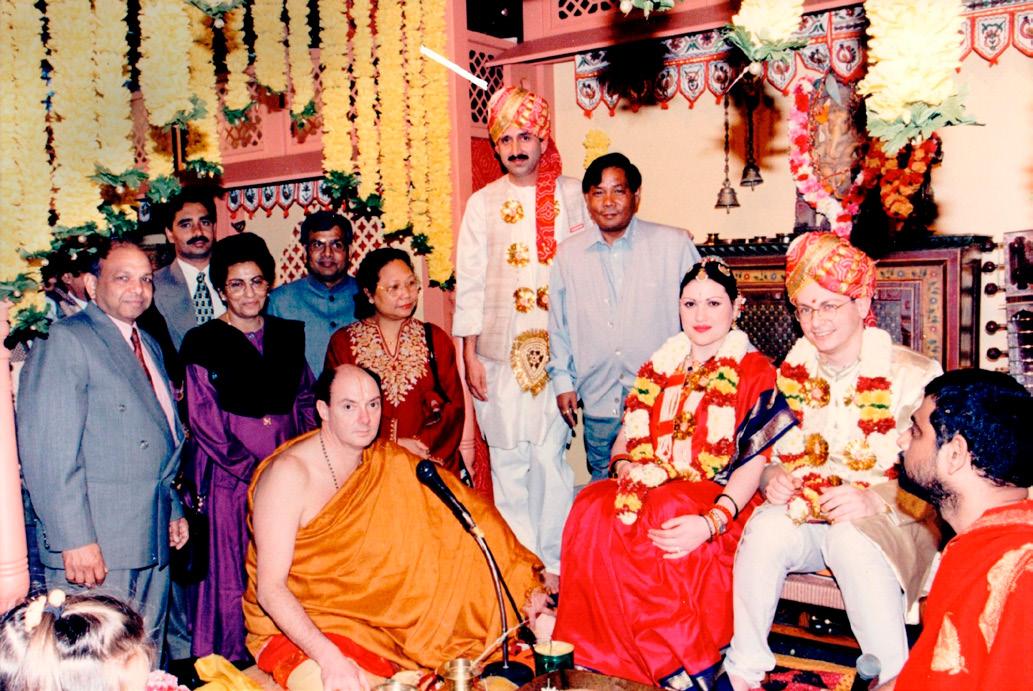
and the groom towards each other. Hundreds of people would watch the extravaganza unfold. It would be covered extensively by mainstream media. “My wife Shhakuntala and I have performed something like 10-15 kanyadaans all over Australia,” Dhar laughs.
It was initiatives such as this one that helped India Tourism set benchmarks for other tourism organisations and win several awards, year after year, at travel shows. “Finally, our efforts won us a Hall Of Fame award,” Dhar adds.
But more than awards, the efforts generated a tremendous buzz about India. Dhar recalls a time when there would be ‘mind-boggling’ crowds at the office. “People would wait for an hour or hour-and-a-half just to get to the reception, even when we had three persons manning the front office. Each evening, we would post 250-300 brochures and letters about India,” he says.
He also recalls how the India Tourism office, modelled on a fort and complete with arches and water features, was a tourist attraction in itself. “Almost each day, groups of tourists from Japan, New Zealand and various parts of Europe would visit the place and get their photos clicked in front of the majestic Indian backdrop,” he recalls with unmistakable pride.
Dhar would be equally proud of the results that India Tourism’s Sydney office delivered. From around 60,000 Australian tourists to India in the late 1980s, the number rose steadily to 2,93,625 in 2016. In fact, Australia is now the seventh largest source market in terms of foreign tourists to India. Tourist numbers from Australia to India clocked an impressive growth of 9.8% and 11.6% in 2015 and 2016 as compared to previous years. “Inbound tourism from Australia to India has seen better growth than that from other countries in last five to six years,” Kanchan Kukreja, who heads India Tourism’s Australasia region, had told Indian Link during an earlier conversation. “Australia is a growing market and a prime one in terms of generating foreign tourists,” she had said.
Naturally, tourist revenues too have gone up during this time. Sandip Hor, Chairman of Australia India Travel and Tourism Council, says that while no official data is available, it is estimated that visitors from Australia contribute over $1.5 billion annually to the Indian economy.
Dhar says that during his time with India Tourism, a study showed that each Australian tourist spent approximately $2,500 on holiday in India, excluding >

India Tourism helped change India’s perception among foreign tourists
APRIL 2018 23
Shanker Dhar, former Regional Director. India Tourism
The wedding of Jonothan Naiman and Elvira Wayne in presence of Shanker Dhar and other India Tourism officials at the India Stand, Holiday & Travel Show at Darling Harbour in June 1997
> airfare. The number, obviously, is much higher now. And, as many as 40-50% Australian tourists in India are repeat travellers, Dhar adds.
All that income comes with very little investment. “For every $100 earned through tourism, the expense was only $7 at the time. It’s such a high return on investment. Tell me which other industry can claim that,” Dhar says.
Tourism is also very favourable in terms of employment generation and has a multiplier effect on many sectors of economic activity. “Therefore, tourism helps the society, by and large, in a better, faster and more distributed way than most sectors,” he explains.
There have, of course, been financial benefits in Australia stemming from the increased interest about India. “Effective promotion of India in the Australian market has increased the number of tour operators, travel agents and Indian hoteliers specialising in tours to India,” Hor says. “Many of them have expressed concern that the closure of India Tourism office will impact their India business due to absence of day-to-day contact.”
Dhar also fears that the move could have an adverse impact, especially in the medium and long term. Tourism is an extremely competitive business now. Every country is vying for the tourist dollar because investments are low and returns are high. “Therefore, you have to be visible all the time in people’s perception. Someone also needs to be in touch with tour operators, persuading them, cajoling them, inviting them to seminars and travel shows so that the India product is on the top of their minds while they’re selling it. Now, if there is laxity on that front, in fourfive years, we may see adverse effects of the
closure of the tourist office,” he says.
On the other hand, those who support the decision say that in today’s internet age, tourists have all the information they need at their fingertips. Sure enough, walk-in enquiries at tourism offices would have reduced. Dhar admits this as well.
“The tricks of the trade have changed in the age of digital and social media,” he says, but adds that any country that’s serious about tourism has an office in Australia. Anybody who is serious about tourism understands that you need visibility overseas, he says.
Hor adds, “Most of the other South East Asian countries where Australians travel regularly - Thailand, Singapore, Malaysia, Korea, Japan and China - have offices in Australia to cater to the local market. India as a tourist destination competes with them and the industry feels that closure of the office will push back India in the competition.”
Insiders say that while PM Narendra Modi has talked about the importance of tourism, there aren’t enough people to talk about tourism down the line. There are strong lobbies for exporters in Delhi, but since the tourism industry is so fragmented, it doesn’t have a big clout, so it can’t influence decisions, he adds.

“Inbound tourism has to be seen as an export because we earn in dollar terms. The tourist comes to your country, eats food, drinks tea and liquor, buys clothes, travels in taxis and airplanes, basically injecting money directly into your economy,” Dhar says.
While India Tourism’s presence in Sydney helped generate just such tourist revenue for India, it is not just about dollars and cents. Tourism doesn’t work in isolation. What India Tourism did was help change popular perception about India. This was brought about by the people-to-people contact that has been generated through tourism.

And it was this perception that helped India Tourism’s Sydney office craft a memorable - or should we use the word ‘unforgettable’ - publicity campaign.
Dhar recalls that the precursor to the massively popular Incredible


India ads was the ‘Unforgettable India’ campaign that was developed and launched for the Australia and New Zealand markets. “In the mid-1990s, we tried to find out what the impression of India was,” Dhar says. India Tourism spoke to the travel industry, regular tourists and conducted focus groups. At the end of the study, a couple of things became clear. The expectations of people were very low when they went to India and they experienced was a big culture shock. But gradually, they developed a love for India’s sights and sounds, its monuments, lakes, rivers and temples. They had never seen anything like it in Australia. “We asked what their final impression of India was. They said that most people love it, some hate it, but that it was definitely unforgettable. On the basis of that, we developed a campaign ‘Unforgettable India.’ It was very successful and turned out to be the mother campaign for the hugely popular ‘Incredible India’,” he says.
In fact, so successful was the ‘Unforgettable India’ campaign, that some time after it, an ad agency in Australia wanted to use word ‘unforgettable’ in the tag-line for a product. “But the client refused it, saying that it would be confused with Unforgettable India,” Dhar says. And to think that all this never would have happened - or happened differentlyif the Indian Government had had its way almost three decades ago.
The year was 1990. It was the preliberalisation India economy. The country was facing a severe foreign exchange crunch. In a remedial measure, the then government decided to shut operations of all but one of the close to 25 Tea Board of India overseas offices and five India Tourism offices. Sydney was one of them. There was a lot of buzz about India among Australian tourists at the time. Many on-the-ground initiatives of India Tourism were shaping up well and delivering results. Ending it abruptly would have meant seeing all that hard work go down the drain.
202,000*
293,625
(* Figures rounded off. Source: tourism.gov.in)
Dhar says he approached the Indian government authorities in New Delhi, explaining how the Indian government might save foreign exchange by closing the overseas offices, but also how the offices were also helping generate foreign exchange. “We gave them statistics to show how the Australian tourist spend was generating hundreds of thousands of dollars,” he says.
Just like this time, there was a lot of outrage even in Australia among tour operators and travel agents. “Even the government of the day wrote to India, saying that they would love to see the India Tourism office stay back,” Dhar says.
All the efforts and lobbying resulted in the decision being reversed. Of the five India Tourism offices that were to shut, only Sydney remained. “Thankfully, the government realised the importance of having a presence here,” he says, adding that even this time, although the full office in winding up, he dearly hopes that there is some kind of representation of India
Tourism outside of the consulate where they could perform some basic duties such as giving information, keeping stock of promotional literature and so on.

Asked if the Indian consulate would do anything in this regard, consul Chandru Appar says, “We have been encouraging and undertaking activities in this regard, individually as well as in collaboration with various organisations and institutions including India Tourism. Our efforts in this regard will continue.”

24 APRIL 2018 www.indianlink.com.au TOURISM
The (tourism) industry feels that closure of the office will push back India in the competition Sandip Hor, AITTC Chairman
AUSTRALIAN TOURISTS IN INDIA YEAR TOURISTS 2010
2011
2012
2013
2014
2015
2016
India ads was the ‘Unforgettable India’ campaign that was developed and
170,000*
193,000*
NA
239,762
263,101
Friends help in times of trouble as well as happiness
Rohan migrated to Australia from New Delhi in June 2011. Being in a new country miles from home, he had to accustom himself to the very different culture of his new homeland. Setting up his home was going to be a huge task. Unlike back in Delhi, he didn’t have the electrician or carpenter who were just a call away then. And of course he didn’t have family around. However, he soon found an extended family welcoming him in his new innings – his fellow community members.
From choosing the appropriate home to rent, to identifying the best school for his kids, Rohan leaned on the experience and genuine advice that his friends gave him. Microwave meals


soon gave way to pot-luck dinners with neighbourhood buddies and lazy weekends became frenetic cricket league days. Today, Rohan actively helps new migrants coming to Australia by recommending the best shops, eateries, suburbs, schools, holiday spots, the list goes on.
Businesses too realise how important people like Rohan are in making sure their own positive experience are passed on to fellow community members, and how it is important to encourage such positive in uencers.
There are several people like Rohan who use a service recommended by their peer group and then refer it on to others. And it makes it even better when they are rewarded for their suggestions. Brands
like Remit2India recognise how close-knit our community is, and have an active referral program. Refer a friend online or on the App and as referrer you get an assured A$50 for every new friend that joins. A small reward for a good deed. So as our community continues to grow, every new migrant moving to Australia will continue to look up to people like Rohan as the guiding light
that helps them settle in. In years to come, they pay it forward by becoming a Rohan to someone else!

APRIL 2018 25 ADVERTORIAL
Women & money
Why women , more than men, need to learn to handle their own finances

For most migrants, the early years of settling into a new home are a time of careful money management, if not financial crunch. From the smallest purchase of kitchen basics, to the major acquisition of their first property, their financial journey is fraught with cautious organisation, and navigated through balancing work and family life, kids’ schooling, and oftentimes, responsibilities of family back home.
Gone are the days when men traditionally took control of the family finances, especially as Indian migrants to Australia are increasingly falling in the educated middle-class category. Yet, the need is stronger now for more women to gain more knowledge and understanding about money and its management.
Today, when women have more choice than ever before, a higher level of education and qualifications than ever before, higher paid jobs than ever before (that significant pay gap notwithstanding), there is no excuse for them to lag behind in their financial management skills.
It is important that they do take time out and start understanding the bigger picture of wealth creation, so that they are financially empowered and take those dayto-day decisions with proficiency.
Upon migration, men may find work quicker and start on their employer-funded mandatory superannuation savings sooner, while their partners may take time to get into the work force or work less hours as they juggle their maternal and family responsibilities and work.
With these constraints and a pay gap with their male colleagues, according to the Association of Superannuation Funds of Australia, a woman’s superannuation balance is on average 43% less than that of a man. Their research shows that average super balances at retirement currently are $292,500 for men and $138,150 for women. Estimating that a single person needs about $800 per week in retirement, over $500,000 in superannuation is needed for a comfortable old age.

Another issue to note is that the average life expectancy of women in Australia is 87 years, higher than that of men at 83 years. This means that women will need more funds, and must be able to manage their own savings at some point in their life.
So there’s a high likelihood that due to death or even divorce, women may have not only less savings, but will also be solely responsible for their household’s financial management.
Women simply have to get serious about
their own financial planning. They need to understand cash flow management, budgeting and planning their monies.
They also need to understand the various types of insurances available in Australia. In the past few years, there have been unfortunate incidents where a partner has passed away unexpectedly and appeals to the community have gone out to help with short-term expenses for the family. The community has rallied behind the families at these traumatic times. However, to ensure there is long-term security for the family, it is important that appropriate type of insurances are in place. Women must take greater initiative in understanding and implementing this for their families.
But where to start?
First up, ask questions. Ask friends and family about what they do, and how. Do not be afraid to ask questions on money



matters, even if they appear trivial to you.

Get involved in the day-to-day management of your family’s finances if you are not already doing so.
Read about money matters in major newspapers, and listen to related discussions on TV and radio. Use social media to understand more details.
Take time out to attend financial management programs for women. A number of work places and superannuation funds run women-only seminars. Seek these out and let your partner mind the little ones for the evening, while you go out to learn more at these forums. Get empowered in any way you can.
Alongside your professional, physical and emotional well-being, set some time aside to plan for your financial well-being.
Pawan Luthra


Australian Border Force protects our border and our community. ABF officers work to stop dangerous items like drugs and firearms from coming into Australia, and to stop visa fraud and the trafficking and exploitation of foreign workers.
Sometimes, threats can be detected within our border. So if you see something suspicious or something that just doesn’t feel right flag it anonymously with Border Watch and help the Australian Border Force keep our community safe.

Flag suspicious immigration, customs and border-related activity at australia.gov.au/borderwatch

26 APRIL 2018 www.indianlink.com.au WOMEN
GANDHI MAHATMA AN IMMIGRANT A DIGITAL EXHIBITION Help the Australian Border Force keep our community safe
The
Let women be angry
The anger will initiate the positive shifts that will kickstart the transformation process
BY APARNA ANANTHUNI
The last time I tried to explain to a group of men that women are (shock, horror, indecorum, whaat) angry about the inequality and violence our gender - over 50% of the population - has faced for centuries and centuries of recorded human history, it just made me angrier.
I was stared at in amusement, condescension, and in some cases, discomfort, as if I had started talking about how heavy my flow is on the first day (god forbid).
Do you know what really made me furious? The fact that I felt like I was ranting, not telling an important truth. Or rather, the idea that the one (ranting) automatically precluded the other (truth) in the eyes of my audience.
Angry women are always given short shrift, and I want to know why.
What is it about our anger that sends off alarm bells?
Statistically, our anger isn’t a major cause of violent crimes - we are overwhelmingly the victims, not the perpetrators.
And, just as undeniably, our anger has been amply justified by the fact that we are still fighting the most basic battles to
be heard and believed and respected as equals to men.
Also, guess what? Our anger, when we express it, has more often than not, exposed our inequality and galvanised society to change. Votes for Women, anyone? #MeToo, anyone?
But here’s the thing: humans are creatures of the stories they create and tell each other. And we like to tell the same ones over and over again, in different forms and mediums.
And for too long, the stories of angry women have been stories of bloodshed and disaster.
Euripides’ Medea: Kills her own children in a vengeful rage.
Draupadi of the Mahabharat: Sets off a cataclysmic war in which almost everyone is killed, and craves to run the blood of her enemy through her hair.
The warrior Durga: Loses control when she gets angry to the point of nearly destroying the world.
The Tamil epic heroine Kannagi: Threatens to destroy the entire city of Madurai unless her husband is brought back to life.
Wonder Woman: Her anger at her lover’s death turns her into a raging goddess figure who could destroy the world. Every angry evil female character in fairytales: Does crazy psychotic sh*t.
Women, in the stories we tell ourselves as humans, screech, howl, rage, and then wreak havoc. Our anger, even when justified, equals destruction.
I have to bring up the ‘vengeful goddess’ trope here: woman as enraged force of nature, destroying everything in her path. She strides through religious texts, classical literature, comic books, movies, novels, and she is often seen as an example of a “powerful woman” by those desperate to sidestep the fact that she is largely the creation of patriarchal male writers, who, surprise surprise, aren’t particularly keen on gender equality.
She also, I would argue, lurks behind every accusation of “angry feminist” and “crossing the line” and “going too far”: our collective cultural consciousness of the moral inherent in “hell hath no fury like that of a woman scorned”.
We almost never tell stories of angry women who create peaceful change, who wield their anger strategically, and with

purpose.
Right now, there is much talk how we women need to start talking about solutions, instead of just accusing and ‘shaming’ and speaking out. We need to invite men to the table. We need to look beyond our anger.
But guess what? Anger is how we were heard in the first place. Anger is our rational weapon that we are deploying strategically. And it is working.
So, it’s time society learns to accept the Angry Woman, and considers the possibility that her anger, instead of destroying the world, might just make it a better place.
Indian Link would like to confirm that Aparna Ananthuni was, in fact, angry when she wrote this piece.

INDIAN LINK RADIO APP







APRIL 2018 27
Anger is our rational weapon that we are deploying strategically. And it is working.













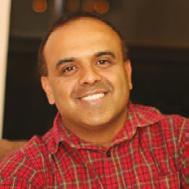









28 APRIL 2018 www.indianlink.com.au Phone Safari Mail Camera Anup Neelam Raghu Manoj Kashif Sagar Radio Rishabh Pavitra Priyanka Charuta Pawan INDIAN INDIAN LINK RADIO Download the free App Now
Easter indulgence
ELIZABETH GAETE’s chocolate treat that’s as much fun creating, as eating
When it comes to food at Easter time, most of us are very familiar with the big role that chocolate plays over this holiday period. Easter egg hunts in the backyard for the kids are a regular occurrence. But why should children have all the fun?
Many of us will have a social gathering with friends and family over this holiday period and what better way to indulge the adults with a decadent chocolate Easter cake. It will not just serve as the crowning glory of your Easter feast, but will satisfy the cravings of even the most fervent chocolate fanatic!
COLOURED EASTER EGG S

DECADENT CHOCOLATE EASTER CAKE > Makes 4 serves

Ingredients
For the chocolate mud cake
250g chocolate (125g dark chocolate, 125g milk chocolate)
250g unsalted butter
1 tbsp instant coffee granules
¾ cup water
1 ½ cups caster sugar
225g plain our
100g self-raising our 30g cocoa powder
to lukewarm. Sift together the self-raising and plain ours, cocoa powder and bicarbonate of soda in a large bowl.
If you want to impress your guests while entertaining over Easter, make your own edible Easter eggs. They make a great table display and add a savoury touch to your meal.

Ingredients
Hard boiled eggs
Food colouring
¼ cup vinegar
Water
Small bowls
Method
Fill each bowl with water and ¼ cup of vinegar. Add different food colours to each bowl – the more you add the more intense the colour.
Dip each egg, into the bowl, removing with a spoon when they reach the desired colour.
Leave the eggs to dry on paper towels.
Tip: You can place round or star stickers or tape around the egg before placing into the bowl of food colour, to create lovely patterns on your eggs. Allow to dry thoroughly before gently removing the stickers.
½ teaspoon bicarbonate of soda
4 large eggs
2 tablespoons vegetable oil
1 teaspoon vanilla extract
½ cup buttermilk
Chocolate ganache
150g milk chocolate
150g thickened cream
Easter nest
75g fried noodles
150g milk chocolate
Method
For the mud cake
Preheat the oven to 150 degrees for a fan forced or 160 degrees Celsius for a normal oven.
Grease an 8in/23cm round cake tin. Line the tin with baking paper, extending it a few centimetres above the tin.
Put chocolate, butter, coffee, water and caster sugar in a medium saucepan, over low heat. Stir occasionally, until the chocolate and butter have melted and the sugar has dissolved. Remove the saucepan from the heat and allow to cool
In a separate bowl place eggs, oil, buttermilk and vanilla, and whisk together until well combined. Add the egg mixture to the dry ingredients and stir until well combined. Then add the chocolate mixture to the our and egg mixture. Do this in two batches, stir after each addition until well combined. Use a whisk to stir the mixture instead of a wooden spoon.
Pour the mixture into the prepared cake tin, through a sieve. This will give you a lump free cake mixture and the results will come through with a lovely textured cake. Bake the cake for 1 hour and 30-45 minutes. Insert a cake skewer or a knife through the cake and if it comes out clean, the cake is cooked. Remove the cake from the oven and place a sheet of baking paper on top of the cake. Then wrap the cake, still left in its tin, in an old towel. Leave overnight or for a couple of hours until completely cooled. Once the cake has cooled remove it from the tin. The cake will be unlikely to be level, so cut it straight across the top, and place the levelled cake on serving dish upside down. The bottom of the cake will be level and will create that straight nish. While the cake is cooling make the Easter nest.
For the Easter nest
Melt the chocolate in a small saucepan
over low heat. Once the chocolate has melted remove saucepan off the heat and stir through the fried noodles. Do this gently so that the noodles don’t break and hold their shape. Spoon the mixture onto a baking tray, lined with baking paper. Shape the noodles into a nest. Use your ngers to form the mould of a nest shape. Make an indentation in the centre, so that it can hold the Easter eggs. Place the tray in the fridge to set.
For the chocolate ganache
Put the chocolate and cream in a medium saucepan on a low heat, stirring continuously. Remove from the heat once the mixture is smooth and the chocolate has melted. It is important not to heat the mixture any further as the chocolate can burn. Allow to cool slightly.
For the assembly
Pour the ganache over the cooled cake and spread with a palate knife evenly over the top and sides of the cake. Take the Easter nest out of the fridge and carefully run a knife under the nest to lift it off the baking paper. Place it on the centre of the cake, while the ganache is still runny.
Put the cake back into the fridge. This will set the ganache and allow the nest to stick to the top of the cake.
Take the cake out of the fridge and allow it to come to room temperature before serving. Place an assortment of solid and ‘birds eggs’ Easter eggs into the nest. Jelly beans can also be used to add a splash of colour.
APRIL 2018 29
FOOD
Indian films, Aussie critic

YouTuber Corrie Hinschen reviews non-mainstream and regional Indian cinema
BY EMIE ROY
What does it take for the English-speaking world to realise that Indian movies are not just about Bollywood? Well, here is a step in the right direction.
Corrie Hinschen, a Brisbane-based Australian movie critic, has decided to look largely beyond the song-and-dance films from India and explore parallel cinema and regional cinema, especially from South India.
Masala Bollywood films captured the attention of the Western world long ago. The best outcome of this was that the films changed the perception that India was a country of elephants and snake charmers. Having said that, there is no denying that regional cinemas in India have a huge following of their own, particularly because of the quality of these movies. However, outside India, they have not had the same kind of reach that mainstream Hindi movies enjoy.
This is where Corrie comes in. He is a YouTuber, who reviews Asian movies
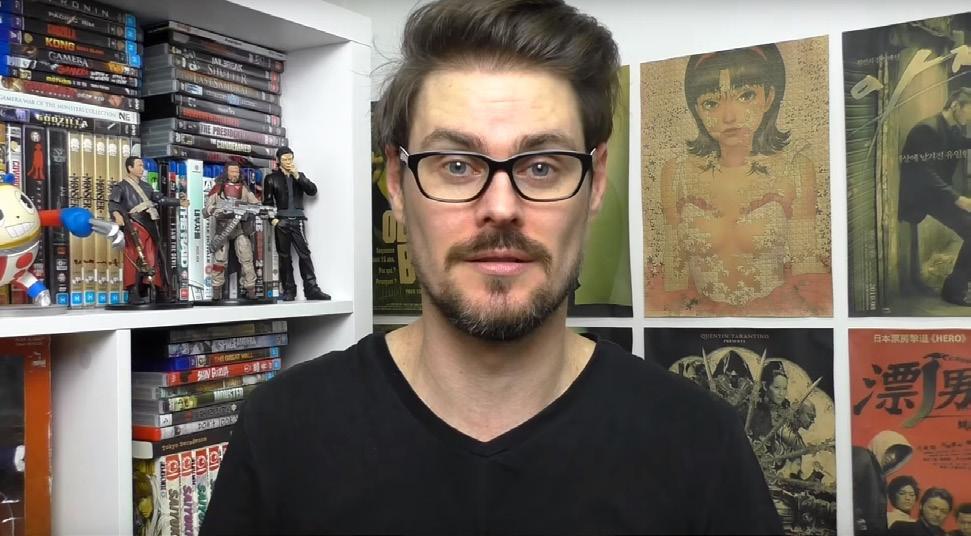
from South Korea, Japan, China, Hong Kong, Indonesia, Taiwan and India. He broadcasts the reviews on his channel, Pieces of Work, which has around 35,000 subscribers. South Korean films, he says, are his bread and butter. “However, I adore Indian films as well,” he says.
Of the 51 videos on Indian movies Corrie has made so far, 29 are Hindi film reviews (very few of these are the mainstream type), nine are on Malayalam films, three on Tamil, four on Telugu and two on Kannada films. “It is the necessity of regional cinema to compete with the multimillion dollar industry called Bollywood,” Corrie says. “This requires them to make these extraordinarily good movies.” The best part is that Corrie reviews these movies in English, which introduces them to an English-speaking audience as well.
Living in Australia, and not speaking any of the Indian languages, how does he decide which movie he should review?
“My keen audience plays a part here. I take suggestions, and sometimes even run polls to determine which movie I should watch next,” Corrie explains.
Asked to pick his favourite movie from all the Indian movies he has reviewed so far, his choice is Mumbai Police, a thriller in Malayalam. Quite familiar with the actors and actresses from these movies, he
picks Prithviraj, a Malayalam actor, as his favourite. On a lighter note, it takes Corrie a lot to even try and pronounce his name; but he has no trouble endorsing his acting. But his reviews aren’t just full of high praise. “I do have very strong opinions about what happens in India in reference to the movies that are made there,” he says. Corrie’s recent review on Padmaavat is a great example. He does not shy away from stating that the movie lacks soul, and as he does it, touches upon some pertinent social issues. It is interesting that someone who has never been to India, and hasn’t had first-hand experience of its culture, has formed an idea about the country’s way of life and society just by watching many of our movies. And that includes some grim realisations as well.
Yet another relevant issue that he addressed recently was the plagiarism in Indian movies. In his video titled India, We Need To Talk About Plagiarism, he rips apart some plagiarised Indian movies. “This inadvisable trend of plagiarisingeuphemistically referred to as ‘inspired by’ - will undermine the value of the great movies that are made in India. I will continue reproaching this trend unless it is discontinued,” he says in the video.
Corrie may well be the only Australian who reviews South Indian movies in English, and these reviews have been viewed between 10,000 and 56,000 times.
For good regional films, this could serve as a launch pad to the English-speaking audience in Australia, and thanks to the power of the internet, to the wider world.
30 APRIL 2018 www.indianlink.com.au CINEMA
The inadvisable trend of plagiarising will undermine the value of the great movies that are made in India
Corrie Hinschen, movie critic
The making of Dickens
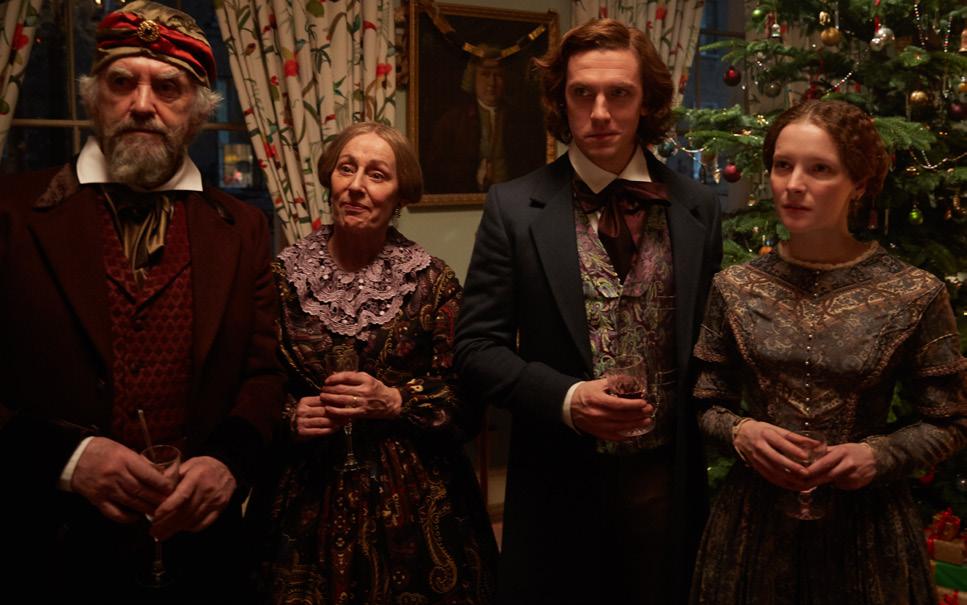
Indian-origin director Bharat Nalluri ’s film on the celebrated author is set for online release
 BY JYOTI UTTAM
BY JYOTI UTTAM
Only a handful of Indian or Indian-origin directors have made it big on the English language movie scene. They include Mira Nair, Gurinder Chadha, Shekhar Kapur and M ‘Night’ Shyamalan. To add to this short list is a name not many would have heard of, but Bharat Nalluri is slowly but surely making a mark in the film industry with an eclectic repertoire of films and TV shows - Miss Pettigrew Lives for a Day, Tsunami: The Aftermath, Life on Mars, MI-5 and Emily Owens M.D., among others.
Nalluri’s latest movie is The Man Who Invented Christmas, slated for online release on 28 March. It is the story of how the author Charles Dickens came about creating and self-publishing his iconic novella, A Christmas Carol. The movie is based on a critical part of the life of Dickens when he is 31, a literary rockstar on a downward trend. Three of his books had failed in a row, debt was looming and his wife was pregnant with their fifth child. To make matters worse, he had hit writer’s block. Bringing out a successful book was crucial for him. He had an idea for a new book about a miserly man who is redeemed after meeting the ghosts of Christmas Past, Present and Yet To Come.
The lavishly illustrated volume turned out to be more than just an instant moneymaker. The spirit of Christmas, as we know today - charity, gifts, parties, the
tree and its secular tone - was non-existent until the book came out. Christmas had degenerated into a drunken festival. The slim, 70-page book, which went into seven reprints in six months, revived the meaning of Christmas as a time for reflection and began a host of customs that are popular even today.
In The Man Who Invented Christmas, Nalluri hasn’t portrayed Dickens as the bearded serious-looking elderly man we usually see in photos. He is a dashing young man in his thirties, captured from his portraits of that time. Important scenes from the book are recreated in the movie and deftly interwoven into Dickens’ own life story and his creative journey.
Nalluri, who was in Sydney in December last year to promote the film, spoke to Indian Link about his cinematic journey.
Having moved to the UK from Andhra Pradesh at the age of five, Nalluri grew up watching Bollywood movies. “Sunday viewings were Sholay, Amar Akbar Anthony, Pakeezah and such classics accompanied with mum’s dosas. The films were in Hindi which I did not understand, but I loved the songs and drama. They have, without a doubt, influenced me,” he said. One can certainly see that in The Man Who Invented Christmas. Though there is a dramatic way of conveying the emotions of Charles Dickens that seem larger than life, these are conveyed without being over the top.
Asked if he would be interested in taking up a film project based in or on India, Nalluri said he would love to but “I want to find something that has some connective tissue to my experience so that I’m not pretending to be something I am not. I want to make sure I’m not just
skimming the surface of the subject.”
A project in the pipeline is Tip Top Taj Mahal about Indian immigrants coming to New Zealand in the 1980s, a subject close to his own immigration experience.

The director also praised the huge renaissance in Indian cinema. “The new directors are amazing. Lunch Box is such a beautiful film. Nawazuddin Siddiqui, Manoj Bajpai and Irrfan Khan are some of my favourite actors. Such trained, controlled and powerful film-makers and actors!” he said admiringly. He himself started the journey with his father’s Super 8 camera, making small films with his friends. “I won some awards, went on to make bigger films, set up a company and it all somehow happened,” he said, recollecting how his career evolved. “Film making is lightening in a bottle. It is stunning whenever you get it right. So many people are involved from the beginning to the end, right up to making the poster. Every one of them has to get it right,” he said, sounding relieved that his movie turned out well and has been well received the world over.
Bharat credited the film’s success to the “copper-bottomed” script by Susan Coyne and the wonderful crew and actors. Handsome Dan Stevens of Downton Abbey fame plays the young Dickens well,
capturing both the humour and energy of the personality. Christopher Plummer playing Ebenezer Scrooge is fantastic as usual.
You won’t have to read The Christmas Carol again to enjoy the movie, but Nalluri has certainly become a Dickens fan from the experience. “He is brilliant at telling a wonderful, exciting adventure story. He gives you all this fun but underneath there is something to think about,” said Nalluri, referring to the way Dickens brings out social issues of child labour, poverty and inequality in his books. As a director, Nalluri has captured this brilliantly in the movie and woven a fascinating story where Dickens’ real family and imaginary family of characters from his book come in and out of the movie scenes beautifully.
Dickens is one author who has never been out of print and with this movie Bharat has created a lovable movie that will never be out of date. Certainly no ‘Bah, humbug’!
APRIL 2018 31
I did not understand (Hindi films), but I loved the songs and drama. They have, without a doubt, influenced me
CINEMA
Icon Film Distribution
MATRIMONIALS
SEEKING GROOMS


Seeking professionally quali ed, well-settled match (PR holder) in Australia for Gujarati Brahmin girl, 30, 5’6”. B.Sc. IT quali ed and working. Caste no bar Currently living in Mumbai. Enjoys both Australian and Indian culture. Please send details with photo to Ritsididsi@yahoo.com or 0420 734 004

Seeking professionally quali ed, well-settled match (PR holder) in Australia for Gujarati Brahmin girl 36, 5’2”, slim and working as fashion designer (quali ed). Caste no bar. Currently living in Dubai. Enjoys both Australian and Indian culture. Please send details with photo to bhagu.trios10@gmail.com or 0420 734 004
Match required for my sister, Aus citizen, Hindu Punjabi (non-veg) 5’0”, slim, fair, beautiful, 1988 born, Masters of Professional Accounting, working in Melb. Aus citizen/PR req. Email melbournejodi@yahoo.com
Seeking professionally quali ed, well-settled match in Australia for convent educated, BTech MBA, 29, 5’2” fair, slim, smart Kayastha girl, currently working in Ernst & Young, Delhi, India. Caste no bar. Please send details with photo to sudhirsaxena6116@gmail.com
Well-settled family in Australia seeks a match for a 5’2” Ramgarhia Sikh girl, 28 years old. The girl has Australian PR and is B Tech in Computer Science. Please contact 0430 076 580

Seeking professionally quali ed settled match for Sydney based, never married Aus citizen, Hindu, Punjabi Khatri 45, 5’3” slim, fair, attractive girl. Girl is postgraduate and is working on a good position in government organisation. Please send details with photo to Indsyd2016@gmail.com
SEEKING BRIDES
Seeking professionally quali ed settled match for Sydney based, never married Aus citizen, Hindu, Punjabi Khatri, 44, 6’, athletic built boy. He is project manager with engineering background and is working in a private organisation. Please send details with photo to Indsyd2016@gmail.com

HOPE IS LIFE

32 APRIL 2018 www.indianlink.com.au
IF YOU HAVE TROUBLES, I HAVE SOLUTIONS .. -,.,-�'"'...,.. ,A; x -_Q�-- _A_ Expert in Palm Reading, Face Reading, Numerology, Photo Reading, Horoscope and Lucky Numbers �i R #3 t+1 • t1@ •I 1� • :j il 1� M 1� @l•V4@ •I•)� 1 +1 =bid I PRIVATE & CONFIDENTIAL VEDIC SOLUTIONS AVAILABLE FOR FOR EVERY PROBLEM THERE IS A SOLUTION EA PROBLEM MARRIA E PROBLEM LO E PROBLEM USBAN & IFE REL IONS IPS C IL REN MIS ES E UC ION PROBLEMS I ORCE FAMILY ARUMENT FINANCE & BUSINESS SEXUAL PROBLEMS JOB & MONEY PROBLEMS JEALOUSY ENEMIES, ETC C S Australian Registered Migration Agents and Mortgage Brokers. We help with all your Australian and New Zealand Migration related enquiries. 1 ST CONSULTATION FREE!!! CALL NOW ON 0413 553 140 Our services Include: - Advice and Lodgement on Migrational Pathways - General skills Migration Advice Lodgement - Student Visa Advice and Lodgement - State Sponsored Visa/ ENS/ RMS/ 457 Advice and Lodgement - Business Migration Advice and Lodgement - Partner and Family Migration Specialist - Admission in Australian Colleges and Universities - AAT Review Procedures in Australia - Immigration changes introduced as of March 2018 - Permanent Skilled changes as of March 2018 - Temporary Skilled Visa Shortage Update CONTACTS: Syed Mohiuddin Director Ground Floor, 57 Macquarie Street Parramatta, NSW 2150 Mob: 0421 119 628, Ph: +612 8677 5161 syedcompletems@gmail.com syed@completemigrationservicesint.com.au Adil Mohiuddin Managing Director Ground Floor, 57 Macquarie Street Parramatta, NSW 2150 Mob: 0413 553 140, Ph: +612 8677 5161 adil@completemigrationservicesint.com.au NEW OFFICES Want to work, study & live in Australia or New Zealand? Contact us! We do the hard work for you! Migration Agents Registration Number www.mara.gov.au 1171248 New Zealand Entrepreneur Work Visa now available We also specialise in: - Home and commercial Loans (MFAA Certified) - International Money Transfer SPEAK WITH US BEFORE ITS TOO LATE!
APRIL 2018 BY MINNAL KHONA
Minal Khona has been reading tarot cards for the last two decades. She uses her intuition and connect with the cards mostly to help people.


ARIES

March 21 - April 19
A Libran in uence will make you act in a balanced manner instead of in the Aries style – initial enthusiasm that quickly burns out. For new perspectives, you might seek professional help. Use your thoughts and mental strength to solve problems instead of thinking with your heart. A delay in legal matters or a lack of purpose causes anxiety at work; but you will complete a project successfully despite hurdles. Money is not a problem. An Aquarian might give you insights into your behaviour.
July 21 - Aug 22
Introspection, solitude, a pause in the progress of a situation and re-evaluation of one’s life’s goals dominate this month. You might feel disappointed in love and resigned to continuing alone. Someone will provide the missing link needed to ensure the success of an idea. Travel is predicted. Nervous exhaustion causes health issues but friends are supportive. Finances improve but after a while. Romantic relationships take a turn for the better. You have what it takes, just be patient.
SAGITTARIUS

Nov 22 - Dec 21
TAROT
TAURUS
April 20 - May 20
Focus on your own work and be the star of the movie of your life. The universe will provide insights into the future and positive inputs make things better. Karmic ties with someone you love make it dif cult to let go so nurture yourself well. A friend provides a safety net and you will stop wasting time on unproductive matters. Picking up a new skill enhances your long term prospects at work. Follow your heart and things will work out better than expected.
VIRGO Aug 23 - Sep 22





Inner con icts arising from unexpected desires make you seek clarity to effectively handle a situation. Romance will nd you but you will be preoccupied with other things. You might feel out of control due to what seems like an insurmountable problem caused by others. Completion of a project brings gains. A love you had given up on might return. Health is good and obstacles are temporary. Be honest with yourself and keep a positive outlook at all times.

CAPRICORN


Dec 22 - Jan 19
Any break up in a relationship is only temporary though it is a very stressful time. Extreme stress due to ill health or hospitalisation of a parent or loved one is predicted. You might make losses but they are temporary. You might inherit some money or spiritual guidance. Stomach or prostate gland problems could occur. If married and having issues, it could lead to a separation due to an extra marital love affair. Things can work out so lie low and resolve issues.
A Sagittarian in uence makes you outspoken and forthright this month; with a longing to be outdoors. You are future oriented at work and discussions, inventories, analyses and new activities keep you busy. Happy surprises are in store and you might even move closer to your childhood home. A certain health condition might need medical intervention. An upset stomach or anxiety due to repression could be the cause. You want to pursue philosophical interests till things get clear.
GEMINI

May 21 - June 20
Unpredictable and sudden changes lead to interesting experiences. You might have a dilemma about a situation as both options are equally tempting. Separation from a loved one causes frustration. Social commitments keep you busy. Ideas ow and good luck comes with diligent paperwork. A failure will prove to be a blessing in disguise as new avenues open up with better opportunities that are more aligned with what you want. Anxiety makes you look inwards for a solution.
LIBRA






Sep 23 - Oct 22
You look for material prosperity, an organised structure and stability in all things. You are no longer willing to settle for a love that does not feel 100 per cent right. Travel for work is predicted. Your teeth might need attention. Friends are supportive even though boring work or an extra marital affair causes stress. Success in everything is assured as Lady Luck shines on you. An opportunity for the foundation of a very successful future might present itself.
AQUARIUS
Jan 20 - Feb 18
The focus is on career, work and energies dedicated to self-improvement.
You long for something and a lonely soul might enter your life and look after you. It could be someone already married. Good fortune through a benefactor and stability is indicated. Work remains stable and you will achieve success. An estranged ex might try to win you back. Your fears are put to rest as you regain perspective; family differences get resolved. If an offer doesn’t feel right, say no.
CANCER



June 21 - July 20
You will indulge in some risk taking and look for the best course of action to an ongoing problem. Compensation for your efforts at work cheers you up and your attitude has a positive impact on workmates. Material gains in small sums in indicated. Social activities will be highlighted but don’t let yourself get forced into making a commitment. Change for the better is indicated and you might even get an employment offer. Consider seeking help if you feel stuck.
SCORPIO

Oct 23 - Nov 21
You might want to try something new after a setback in your current work. It could also be that your expectations have not been met and you are forced to look for alternates. Explore options fully but this time, go without any expectations. If you have been the cause for a ght in a relationship, be the rst one to do damage control. You could be sad about something; be grateful for what you have and things get better.
PISCES


Feb 19 - March 20
Impromptu departures from home, rest and recreation from work and conventional relationships are the focus this month. An old ame could re-enter your life. You might have a backlog of correspondence to deal with at work. If single, marriage could be on the cards. You will recover if you have been sick lately and money prospects improve as well. Celebrations are in the of ng as you get support from all quarters. Success through work, love and hobbies is indicated.
APRIL 2018 33
LEO
FORETELL
cine TALK
humbug. Every minute counts. And while some of the scenes showing Rani’s ourishing bonding with her students is keenly melodramatic the actress sails above the stagnant pools of water that the plot often encounters.
Rani Mukerji makes her Touretteinformed character unwavering in her upbeat personality, yet she is no giddy-headed breathless optimist. The pain comes gushing out in a sequence where she pounds and pummels her uncontrollable mouth almost as though she were sparring with her destiny.
WHEN HOPE AND SUNSHINE BELIE STRUGGLE
HICHKI

STARRING: Rani Mukerji, Neeraj Kabi; DIRECTOR: Sidharth P Malhotra
HHH HH
There is a disarming idealism at the heart of this inspirational tale told without frills of fancy. The ights of daring that the protagonist Naina Mathur undertakes never seem irrelevant. On many occasions the plot veers towards a sweeping sentimentality that, given other circumstances, would be considered manipulative.
Not here.
Hichki dives deep into the collective consciousness of a nation inured in prejudices and comes up with some well-served lessons on humanism tolerance and generosity. It may not be India’s To Sir With Love. But by Jove,

Rani Mukerji in what easily ranks as her career’s best performances (yes, better than Black) gives Mr Sidney Pottier a run for his heroic stature.
The plot derives its creative juices from a real-life British teacher who suffered from the Tourette Syndrome, a neurological disorder that causes painful verbal dysfunction in the sufferer. It’s astonishing how Rani takes over the sufferer’s role without allowing the disease to impede her character’s ingrained sunniness of countenance.
When faced with a classroom lled with students from the slums (played by young actors who frequently act with representational emphasis)
Rani’s Naina never falters, never mind her tongue. It’s only when she is with her estranged father (Sachin Pilgoankar) that she loses her cool.
Rani’s two dining-table sequences with her screen-father are marvels of screenwriting drama, packaged and performed in pitch-perfect harmony. When the father’s patronising sympathy gets too much, Rani marches off to the kitchen to make rotis, venting her need to exhale in the kneading.
It is the slum students who needed to be a little less soap operatic. In a lm where the message is emblematised in gloriously lucid episodes, the ragged bunch of slumkids go too swiftly from rebellious to sweet-natured. Their changeover seems almost preordained.
Not that their abrupt character transformation takes away from the blithe reformatory mood and reinedin vivacity that shoot across the narrative with splendid sincerity. Not a moment in the storytelling is lost in
The astounding Neeraj Kabi as the cynical teacher who thinks slum is synonymous with scum keeps his character grey without getting into grime.
What I liked about Rani’s Naina more than her textbook-perfect rapport with her students is her bonding with her mother (Sipriya Pilgaonkar) and brother (Husain Dalal). I wish there was more of them in the lm. I wish there were more Naina Mathurs in this world who can teach all of us a thing or two about being human without making humanism a logo on a T-shirt.
Hichki is a work of wondrous lightheartedness. Its absence of cynicism and its touching belief in the power of benevolence and generosity could get overpowering for many of us who face brutal betrayals every day. But isn’t life in cinema all about alchemising the pain and hurt into art? Hichki does that quite often and quite effectively.
Subhash K Jha
34 APRIL 2018 www.indianlink.com.au
ENTERTAINMENT
COMBATING CORRUPTION
RAID
STARRING: Ajay Devgan, Saurabh Shukla, Ileana D’Cruz, Gayathri Iyer, Ajay Singh, Amit Sial DIRECTOR: Raj Kumar Gupta HHHHH
Just when you think the Bollywood thriller is running out of steam there comes Raid, a lm so taut and clenched, so caustic and brimming with political sarcasm that you wonder where was director Raj Kumar Gupta hiding for so many years?

An honest income tax of cer, played with incorruptible smoothness by Ajay Devgn, who gives away nothing (at least, nothing we can see on his face) is pitched against a corrupt politician in the hotbed of Lucknow’s politics.
What happens when Amay Patnaik (Devgn) takes on Rameshwar Singh (Saurabh Shukla) on the latter’s home turf? Strongly imbued in the spirit of social reform, the Idealistic Bureaucrat as revisited in this lm, is a bit of an anomaly. Devgn’s Amay ghts that very system which has created him. Idealistic heroes tend to come across as single-minded, determined bullies. Devgn is all of this. It is remarkable how willingly he lets Saurabh Shukla chew up every scene in which they’re together.
Editor Bodhaditya Banerjee captures people in their most anxious moments. It’s a narrative of tremendous tension but never surrenders to a frenzied
MEDIOCRE TALES NARRATED CRAFTILY
3 STOREYS
STARRING: Richa Chadha, Pulkit Samrat, Renuka Shahane, Sharman Joshi, Masumeh Makhija, Ankit Rathi and Aisha Ahmad
DIRECTOR: Arjun Mukherjee
HHHHH
Debutant director Arjun Mukherjee’s 3 Storeys , with a misleading title, is a craftily narrated tale of characters living in a three-storey chawl in Mumbai.

Set in a middle-class dwelling in the heart of Mumbai, the setting plays a signi cant part in portraying the social fabric and astutely intertwines the lives of the people living there.
The rst act starts on an intriguing note but soon crumbles. The narrative, with its twists and turns, is on-the-nose and proceeds with reckless abandon. And the characters really need to “get it” if the story is to have its triumphant third-act liberation, which they do. Their tales are exciting, absorbing yet clichéd.
Renuka Shahane, with prosthetics and gaudy make-up as the Goan, Flory Mendonca, is a tad over the top. Though she performs to the best of her ability, she seems to be a mis t in her role. She plays a pampering mother who spares the rod and spoils her son Anthon.
Masumeh Makhija and Sharman
Joshi pair as star-crossed lovers; Varsha Joshi a Brahmin girl and Shankar Verma the ace embroider, who land up living in the same building. Their on-screen chemistry is palpable.
Similarly, debut actors Aisha Ahmed and Ankit Rathi as Malini and Sohail make a cute pair caught in an interreligion love story. Their romance, though underplayed, creates a ripple and you root for the two.
Among the others in signi cant roles are Himanshu Malik as the bachelor police of cer Ganpat who lives alone and Richa Chadha, the seductress-cumnarrator. Though wasted in miniscule parts, they have their moments of onscreen glory.
The lm, mounted on a moderate scale, is technically sound. Will Humphris’ camera work is good in parts. His frames capture the locales and emotions sharply, but some of his frames are shaky and the lighting a tad poor.
Clinton Cerejo’s music blends well with the narrative and elevates the viewing experience.
Overall, an intelligent viewer would initially dismiss the lm as a lazily penned plot with banalities and plot-
holes galore, but then the writers cheekily and astutely wrap up the lm. At some points, it makes you say, “Ah, I did not see that coming.”
And, if you are in a good mood, you will leave the lm on a positive note or
cutting-away of the material to play on the urgency of the moment.
Saurabh Shukla has all the fun. And Devgn lets him. It is this spirit of passive resistance that makes Raid a riveting watch. The more Devgn’s goodness shines, the more Shukla’s decadent corruption showers its reeking bene cence down on the plot that ironically gets its sustenance not from Devgn’s Rama-like heroism but Shukla’s Ravan-esqe rhetorics.
While Devgn and his raiders of the lost assets pool their talents to create a moribund army of wealth retrievers, the lm’s fuel surcharge comes from the heated exchanges between the bureaucratic hero and the political renegade. The two actors play against one other with brilliant brio.
Support cast is largely credible and sometimes remarkably engaging (Shukla’s antiquated yet alert mother is a howl). But Ileana D’Cruz brought in for the sake of romantic glamour sticks out like a sore thumb with her patently Lakhnavi chikan-attired performance. By the time the raid on Rajaji’s illgotten wealth is over, the director has made a darkly humorous point on what it takes to call a dishonest politician dishonest.
Don’t miss Raid. One of its many pleasures is to watch the two principal actors in full control, even as the director stands back to let the plot grow hot without burning itself out.
Subhash K Jha
else you will feel cheated for investing in the characters that were just a gment of one’s imagination.
Nonetheless, climb the 3 Storeys and nd out for yourself.
Troy Ribeiro
APRIL 2018 35
the BUZZ
ZAREEN ISN’T JUST ANOTHER PRETTY FACE!
Few people talk about taboo subjects in India, and even fewer Bollywood celebrities, especially about a subject like menstrual hygiene. But not Zareen Khan! The actor was recently in Raipur to talk about important factors related to the subject.
Khan was invited as the chief guest for the one-day state level awareness workshop, which is an effort by the state government to create awareness about menstrual hygiene. Many girls from Chhattisgarh participated in it.
“I am humbled to be invited for such an important cause. It is a great initiative taken by the government and I am more than happy to create awareness through my speech,” Khan said.
“Thanks to Akshay Kumar who showcased the cause so beautifully through his lm Pad Man,” she added.
Agreed, Zareen!
I LIKE FEMALE ATTENTION: RAJKUMMAR RAO

Actor Rajkummar Rao says he’s getting overwhelmed with the attention his female fans seem to be showering upon him.
“I like attention. I like female attention as well. It is very overwhelming. I have seen that there is growth in the amount of people who used to like me and it has gone up thanks to the whole of last year,” Rao said.
“It is very encouraging also in a way... People like me, they are appreciating my work and the kind of lms that I am doing,” he added.
ANUSHKA SHARMA IN FORBES 30 UNDER 30 ASIA 2018 LIST

Bollywood actor-producer Anushka Sharma has added another feather to her cap. The 29-year-old features in the Forbes 30 Under 30 Asia 2018 list, which includes innovators and disruptors who are reshaping their industries and changing Asia for the better.
Anushka, one of Bollywood’s highest paid female actors, started her career with modelling back in 2007. In 2008, she hit a debut goldmine with Rab Ne Bana Di Jodi opposite Shah Rukh Khan. Her terri c performance even won her a Filmfare award for Best Actress.
Since then, she has done a slew of lms like Band Baaja Baaraat, Jab Tak Hai Jaan, PK, Dil Dhadakne Do, Ae Dil Hai Mushkil and Jab Harry Met Sejal Sharma, who’s married to cricketer Virat Kohli, also turned producer, with lms like NH10, Phillauri and Pari. The Forbes list highlights 300 young individuals driving change in Asia.
The actor sure is going places and we can’t wait to see what she has up her sleeve next.
Rao, who started off in the industry with an interesting role in 2010 with Love Sex Aur Dhokha, went on cement his position with back-to-back powerful performances in lms like Kai Po Che!, Shahid, Aligarh, CityLights, Bareilly Ki Bar and Newton. Clearly, the actor likes to keep reinventing with every project.
“Otherwise it gets boring. Once you nd your comfort zone and you keep working in that comfort zone, after a while it gets very boring. You have to keep evolving and keep growing. And growth only happens when you push yourself,” he said.
It’s safe to say that if there’s one actor who does not stick to comfort zones, it’s Rao!
SWARA BHASKER: NO CONTROVERSIES? YES, PLEASE!
While most industry insiders probably love to be surrounded by controversies because it means more publicity, after all, Swara Bhasker doesn’t think so.
The actor says it’s nice to not be involved in controversies sometimes. Bhasker, who is sharing screen space with Kareena Kapoor Khan and Sonam Kapoor in her forthcoming lm, was asked how it feels to have no con icts and controversies while working in a lm that has multiple actresses in one frame.
“I think this entire team is completely invested in the craft and the characters that they are playing,” said Swara.
“There is a great story, and we just want to make every attempt to ensure that people like it. Sometimes it is all right to not have any controversies! I am thrilled to be a part of this project,” she added.
Well, Swara may like to stay away from controversies, but we do not! After all, what’s entertainment without one? The actor, who’s known for often voicing her opinions on social media, received a lot of ak recently when she criticised Sanjay Leela Bhansali’s Padmaavat as a movie that glori es Sati and Jauhar.
“Life teaches everyone as we go about living it - it is normal. With the rise of social media, however, I feel, speaking and thinking has become a contested space where people get to question you and tell you what to do,” Swara said.
“I think that the time when someone tries to shut you down is the test of your conviction, and that gives me the strength to rise above the fear of ‘what will happen if I do this’,” she added.
Clearly, the actor has different sensibilities, and that’s what makes her stand apart from the rest. Swara said, “Everyone has their way of looking at matters, and everyone’s opinions are bound to differ. I believe in frankly acknowledging the good as well as notso-good realities of our industry.
“I am an outsider who has found perfect harmony in the kind of work I do here, but I am also willing to voice my disappointment every time I nd something off.”
Kudos to you, Swara for there aren’t many who dare to!
FARHAN AKHTAR DELETES FACEBOOK ACCOUNT
Actor Farhan Akhtar has ‘permanently’ deleted his personal account on the social networking website, Facebook.
36 APRIL 2018 www.indianlink.com.au
UP-TO-DATE NEWS ON WHAT’S HOT AND HAPPENING IN BOLLYWOOD
ENTERTAINMENT
RAJKUMMAR RAO
The 44-year-old has become the latest celebrity to quit the social network in the wake of the Facebook data breach row. However, he did not mention the exact reason for quitting the platform.
“Good morning. This is to inform you all that I have permanently deleted my personal Facebook account. However, the veri ed Farhan Akhtar Live page is still active,” Farhan tweeted this week. Facebook is facing the heat after Cambridge Analytica, a British consulting company, was accused of harvesting data of up to 50 million Facebook users without permission and using the data to help politicians, including US President Donald Trump and the Brexit campaign.
BOLLYWOOD WAS NEVER MAHIRA’S PRIORITY
Pakistani actor Mahira Khan, who made her Bollywood debut with Shah Rukh Khan-starrer Raees last year, says the Hindi lm industry was never her aim.



Raees did not release in Pakistan, and Mahira was not allowed to promote the lm in India as the Maharashtra Navnirman Sena gave an ultimatum to Pakistani artistes to leave the country and to keep away from its showbiz.
“At that time I was angry. I was sad and angry and there were moments of disappointment and just hurt, you know. Now I’ve come to a place where
CAPTION CONTEST
WIN MOVIE TICKETS!
I believe that anger doesn’t really make me a better actor. It doesn’t do anything for me as a person, so I’ve let go of that, because at that time I was in the mix of it,” said Mahira.
“Bollywood was never really the aim actually. I mean sure you could argue that I could have done more lms there, for sure I could have. But right after Raees I had already started working on (Pakistani lm) Verna, even before all of this happened. My focus was always Pakistan,” she said.
Mahira added that people may perceive that it was a “big jolt” to her career - and it was - but she has moved on. “Currently I just feel it’s something else to be working and be part of this movement of the lm industry (in Pakistan) at the moment.”
KAPIL SHARMA IS BACK, AND HOW!
So he is back, after all. The naysayers and party-poopers are biting their nails. To his credit, Kapil Sharma has adopted a completely new format for his comeback, and viewers don’t get to see even a shred of the earlier shows, except the sexist quips.
So switch on your television sets again because Kapil Sharma is back. Family Time With Kapil, which kickstarted on Sony Entertainment recently, is fun to watch... if you like game shows
where people, who would normally not be caught doing such things, are seen balancing playing-balls between their derriere.
The tempo was preserved to the end, and Kapil’s old colleagues Kiku Sharda and Chandan Prabhakar provided able support. No one missed the spoilsports from Kapil’s earlier shows who have chosen to their separate way. And yes, Navjot Singh Sidhu was also back on the show, though no one knows what his function is.
Sidhu did get his judge’s chair, though. Old habits die hard. And who knows this better than Kapil? But who cares? As Kapil said at the start, “Game toh ek bahana hai, har family ko saath jutana hai. (The game is just an excuse, the idea is to bring families together.)”
There were digs galore about Kapil’s mishaps during the past year, and Sidhu even slipped in a dig about the comedian’s opped big-screen plans. The truth is, however, that families will switch on to the show, for no better reason except to see Kapil act naughty. At one point, he asked a member of the audience why he didn’t bring his wife on the show.
“Insha Allah agli baar aapke liye laaonga biwi ko,” said the overenthusiastic guest.
“Aapki biwi aapko mubarak ho,” Kapil remarked.
No offence meant. Let the fun begin. Even Ajay Devgn, who came on the show, seemed to enjoy himself.
LAST WEEK ON TWITTER
Match the following stars to the tweets they’ve made
Sonam Kapoor, Karan Johar, Jacqueline Fernandez, Farhan Akhtar

Good morning. This is to inform you all that I have permanently deleted my personal Facebook account
So eager to watch you play the role of Shamsher again Dad!
Meet the #Race3 family All set to make your hearts race
Share your views with us on our Facebook page /IndianLinkAustralia
Sara Ali Khan in #Simmba with @ RanveerOf cial directed by ROHIT SHETTY! Releasing on the 28th of December 2018! This winter gets hotter!!!!
What’s the chit-chat here between ALIA BHATT and RANVEER SINGH?

Send your response to: media@indianlink.com.au TO WIN A MOVIE TICKET!!
LAST ISSUE CAPTION CONTEST WINNER
What’s the chit-chat here between KAREENA and KARISMA KAPOOR?

Leyla Singh: Let’s see how far apart we can get in this pic Congrats, Leyla. You win a movie ticket!

APRIL 2018 37
WHO WORE IT
KATY PERRY or SONAM KAPOOR
DOLCE
BETTER?
in
& GABBANA
MAHIRA KHAN
FARHAN AKHTAR
SWARA BHASKAR
ASK AUNTYJI




Janhvi’s right to happiness



DEAR AUNTYJI
I have a question to ask that has my entire family divided. On one point we agreed, however. That Sridevi was a great actress and we were deeply saddened by her death. But Auntyji, while we were all in mourning, a week later, we were all exposed to pictures of a smiling Janhvi on her 21st. How could she look so happy and smiling when her mother had died only a week earlier. I was outraged and upset by this, and we have had many debates at home about the vulgarity of these pictures. How cheap and common to smile and look happy after the sudden death of a mother. What are your thoughts on the subject, Auntyji?
AUNTYJI SAYS
I agree with you on one point. Sridevi was a wonderful actress, a living treasure, a national legend. She made millions, if not billions, happy with her work. And because of that, we all wish her eternal happiness, wherever she is. Now, back to your point about Janhvi’s smiling birthday pictures. Okay, her mother died a week earlier. Now, do you think that perhaps Sridevi raised her children to embrace all of life’s possibilities, and to honour and acknowledge her motherhood by being authentic? Or do you feel Sridevi raised insincere young woman who wallow in the loss of their mother and let this stop them from continuing their lives? Clearly, all the scriptures tell us to live life to the fullest, to appreciate what we have, and to acknowledge and give thanks for our blessings. Perhaps Janhvi felt that she would be doing her
mother’s memory a disservice by moping on her 21st. Perhaps she understood that her mum would have wanted her to continue with life and be grateful that she had a mum who was so special. In any case, Janhvi and her sister Khushi have lost their beloved mother. You have no right to cast aspersions on anything that they do. Their dear mum brought laughter, joy and wonder into our lives. We have no right to demand anything of the daughters. So let it be.
Begging to differ




DEAR AUNTYJI


Today, we went out to lunch with our work colleagues, and a beggar came up to us and asked for some money. One of our colleagues gave him some coins, but this started a

debate amongst us about on whether we should give money to beggars. Most people said that Centrelink gives these beggars money, so why should we and that they will waste it on cigarettes and alcohol. The people said that each time we give money to beggars, we are simply enabling bad habits. I am not so sure, Auntyji. Surely giving someone some coins doesn’t hurt in any way, does it? Why can’t we just give money and think nothing of it? Do we need to be so precious about it? Aap ki kya raay hai?
AUNTYJI SAYS







Arre my little laddoo, aap kitne samajhdar hai to ask me this interesting question. Here is the baat. We live in a very rich society, and in fact, anyone who is living in this wonderful country has practically won the lottery of life. Now let’s just say society is a bell curve - of very rich people on the extreme right of the curve, and most
people in the middle on the curve. Then, you have poor and disenfranchised folks on the extreme left. Now, living in a well-to-do society like ours, it becomes our duty to look after those members of society who are not doing so well. If you spare a few coins, it won’t make a difference to your day. What the beggar chooses to do with the coins is up to them. You have a choice to part with your coins. That choice is not conditional on you deciding what the money is spent on. You are not the Sarkar, collecting taxes to dispense at your discretion. You are just a member of society choosing to give some alms to a beggar. Give it freely, give it willingly and give it without attached conditions. Keep it simple. If you have issues with any of that, then don’t give your paisa. Simple, nah?
38 APRIL 2018 www.indianlink.com.au
BACKCHAT






















APRIL 2018 39 NBN Bundle: Min Charge includes $10 Delivery + $20 Prepayment + $99.95 Setup. Available in selected coverage areas. Typical Evening Download Speed is measured between 7pm and 11pm. Actual speeds may be slower and could vary due to various factors. Prepayment automatically topped up if it falls below $10. Service barred if prepayment top up payment fails. Mobile: Min charge includes $10 SIM. New mobile registrations only. Unlimited Calls & SMS to Standard Australian Numbers are for use within AU only. Standard rates apply for other usage types such as Excess Data, International Calls & SMS, Video Calls, International Roaming & other Enhanced Services. Calls and SMS to 19 Numbers and Premium SMS/MMS are not supported. Data usage is charged per KB or part thereof. Excess Data $10 for extra 1GB blocks. Excluded or excess usage is only possible with sufficient Prepaid Balance. General: These offers may be withdrawn at any time. Plans are for residential customers only and not for commercial use. Visit website for full terms & conditions. 13 31 60 NO LOCK-IN CONTRACT NBN50 TYPICAL EVENING SPEED UNLIMITED DATA FTTN & FTTB speeds to be confirmed when active MIN CHARGE $199.94 $ 69 99 /mth MOBILE NO LOCK-IN CONTRACT $29.99 monthly fee applies after 6 months 42 Mbps 42 Mbps for the 1st 6 months MIN CHARGE $25 $15/mth UNLIMITED CALLS & SMS to Standard AU Numbers 100 INTERNATIONAL MINUTES 4GB
Opening more doors for you
Visit homeownership.gov.au
Save towards a home deposit up to 30% faster
The First Home Super Saver Scheme helps you save faster through voluntary super contributions. You can now take advantage of generous tax concessions and contribute up to $15,000 in any one financial year, and up to $30,000 in total.

Helping to build more homes
We’ve committed $1 billion to accelerate the supply of new housing and ensuring underutilised Commonwealth land is put to better use, including land that is suitable for new homes.
Financial incentives for downsizers
If you are 65 and over and want to sell your current home, you can now put up to $300,000 from the sale, per person, into your super account. This offers greater flexibility and extra tax advantages to older Australians.
40 APRIL 2018 www.indianlink.com.au
out how the Australian Government is helping Australians at all stages of life find the right home.
Find
homeownership.gov.au Creating more opportunities for Australians Authorised by the Australian Government, Capital Hill, Canberra. Advertisement































































































































































































































































 BY JYOTI UTTAM
BY JYOTI UTTAM

















































































